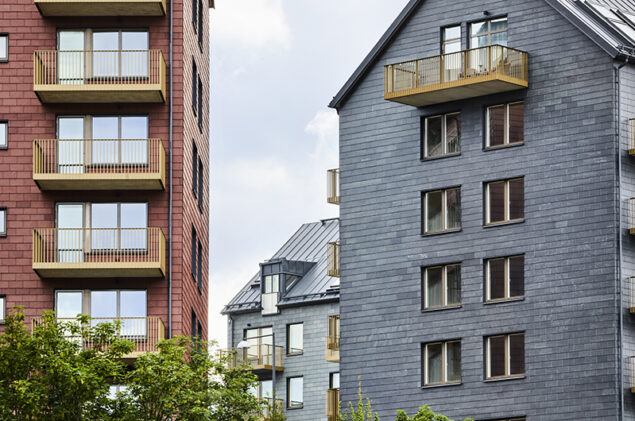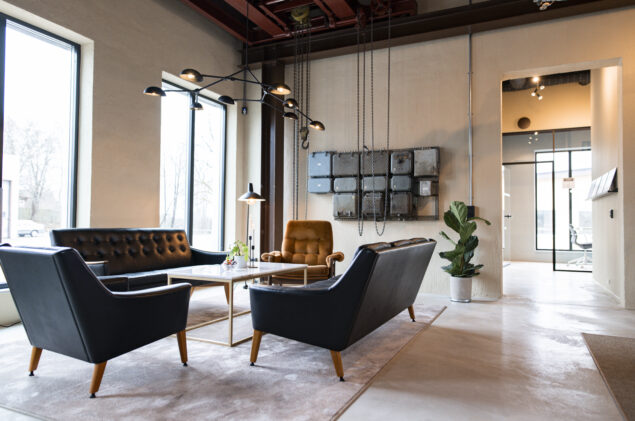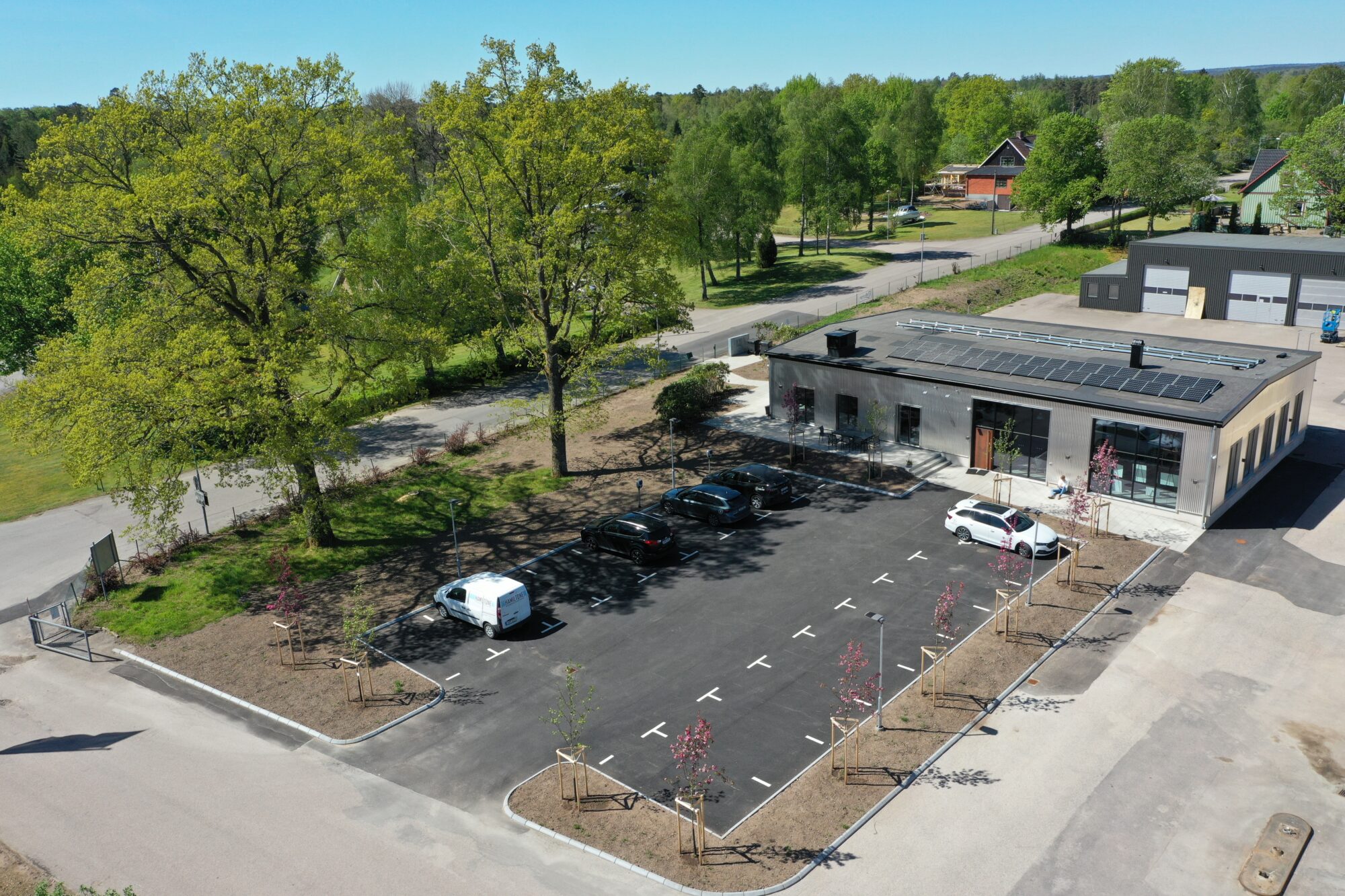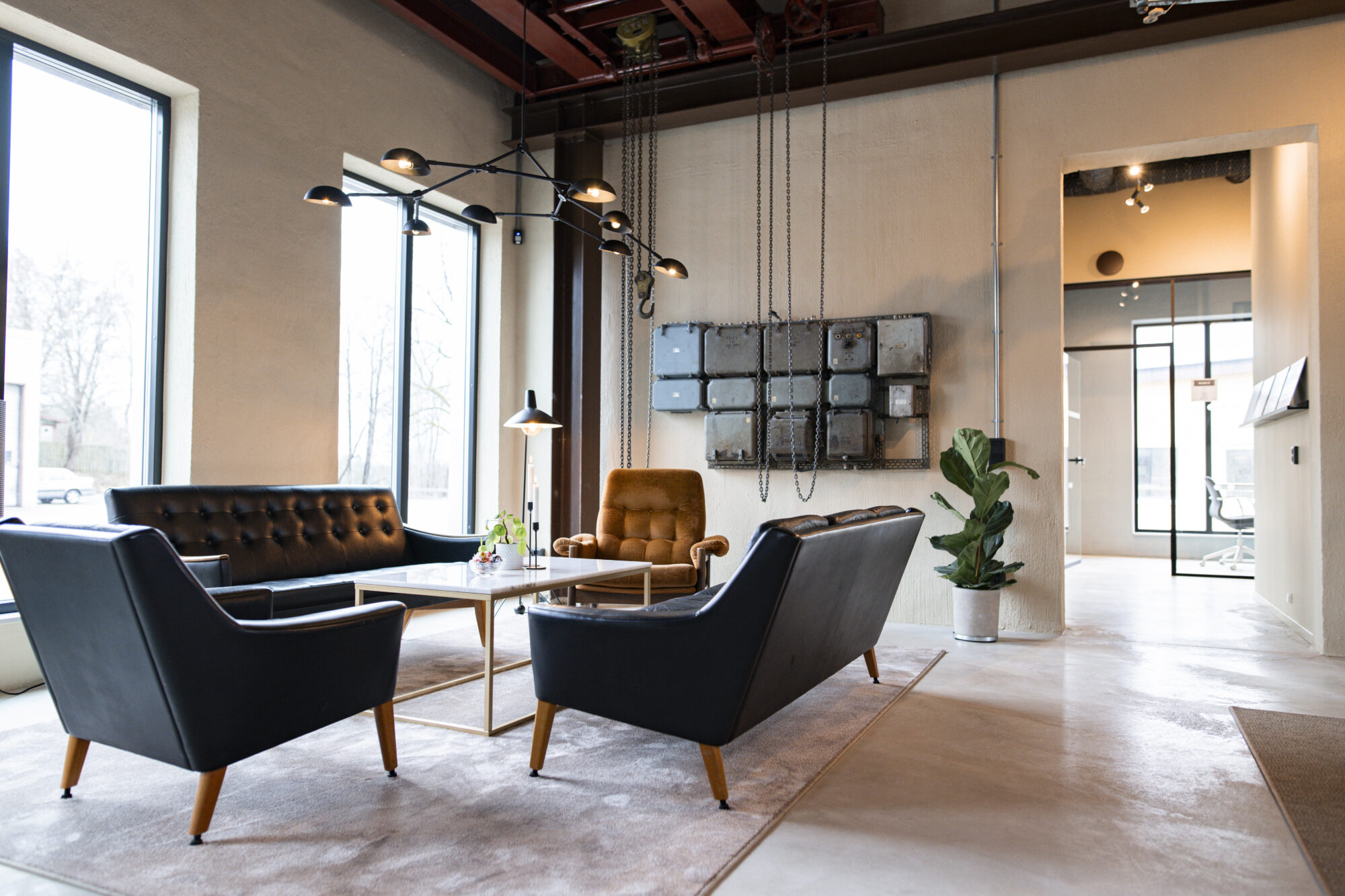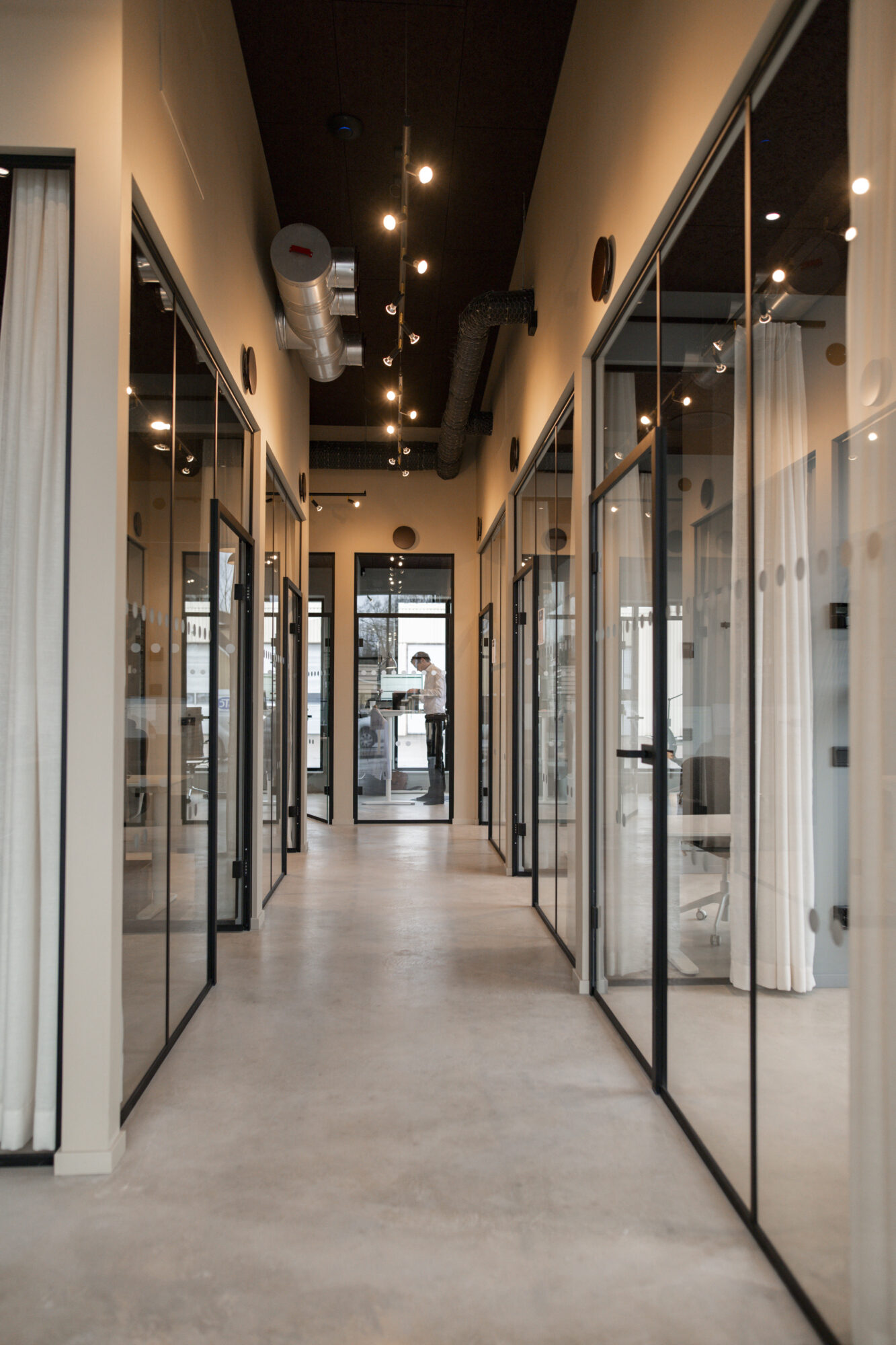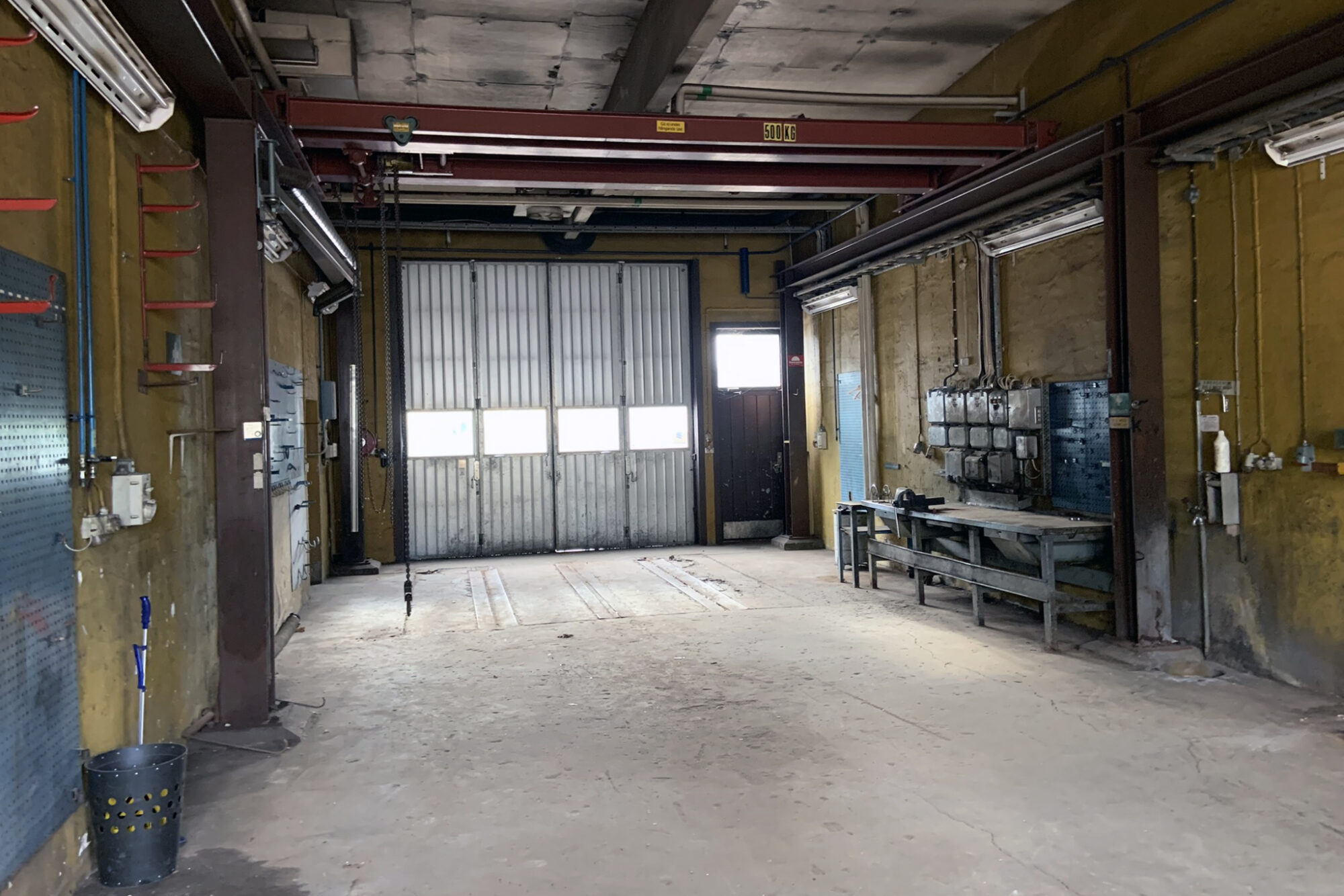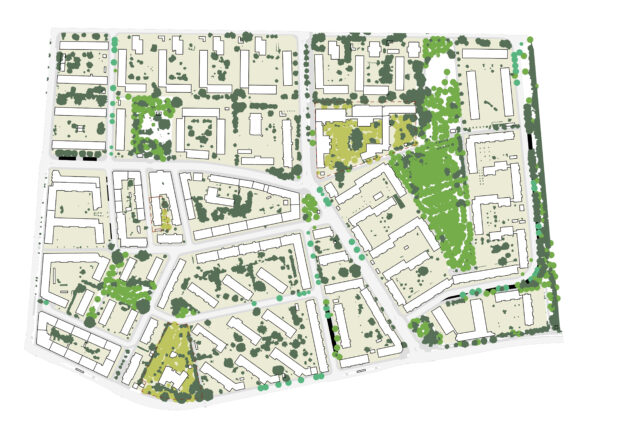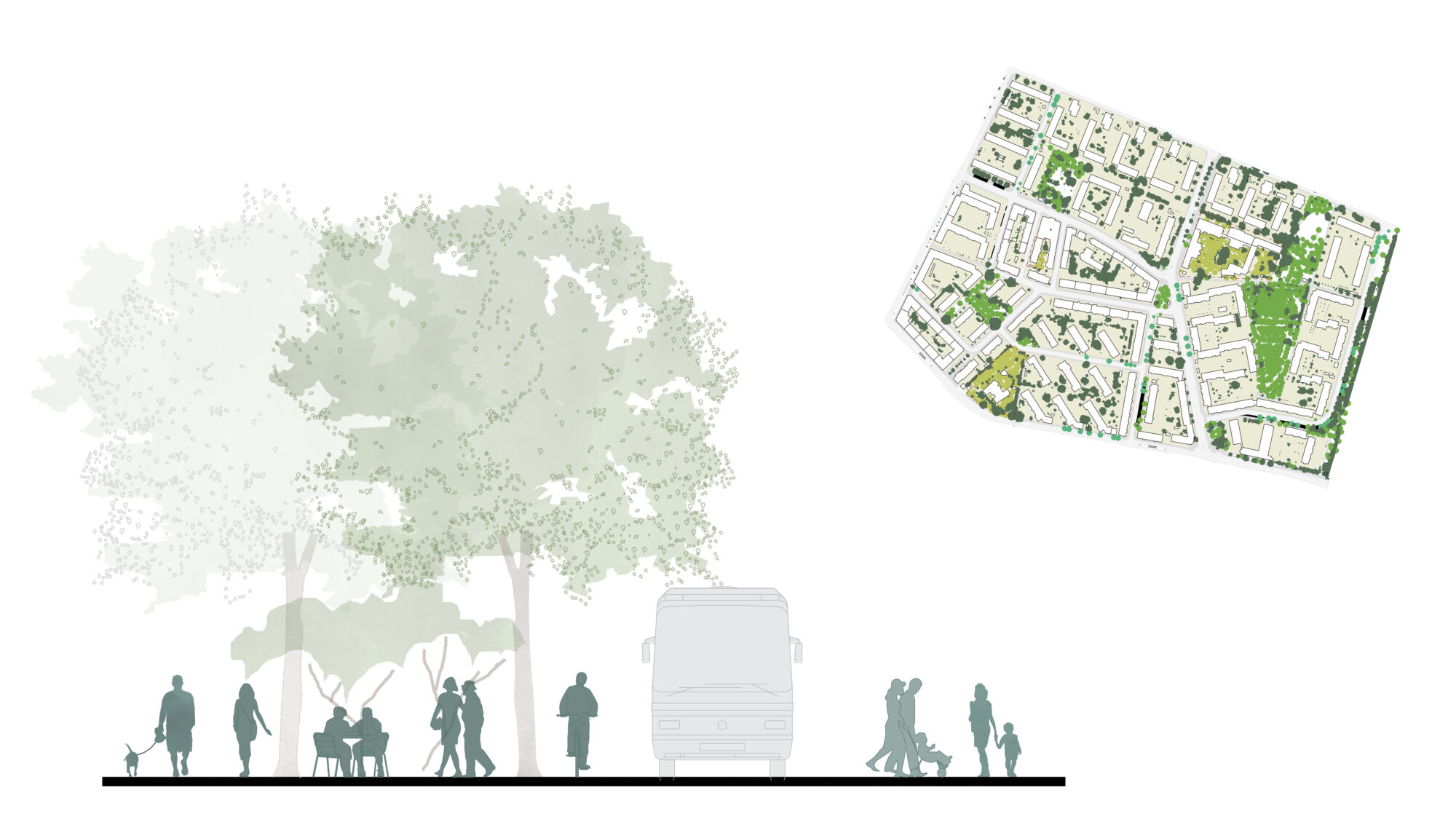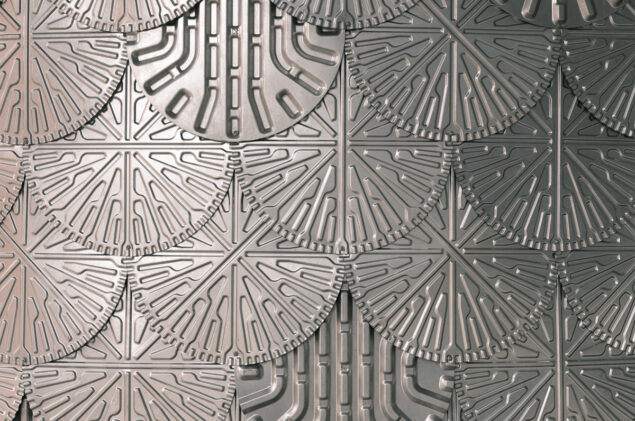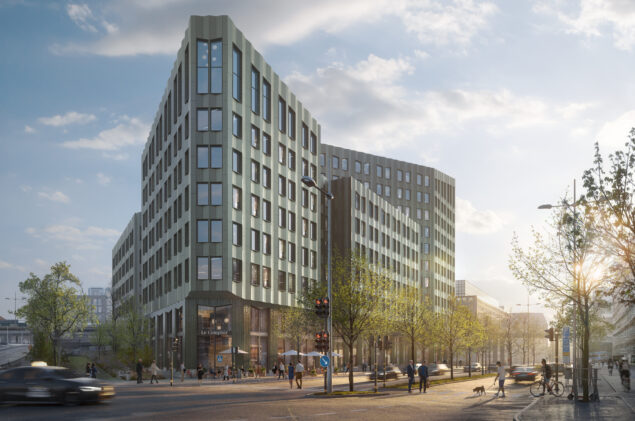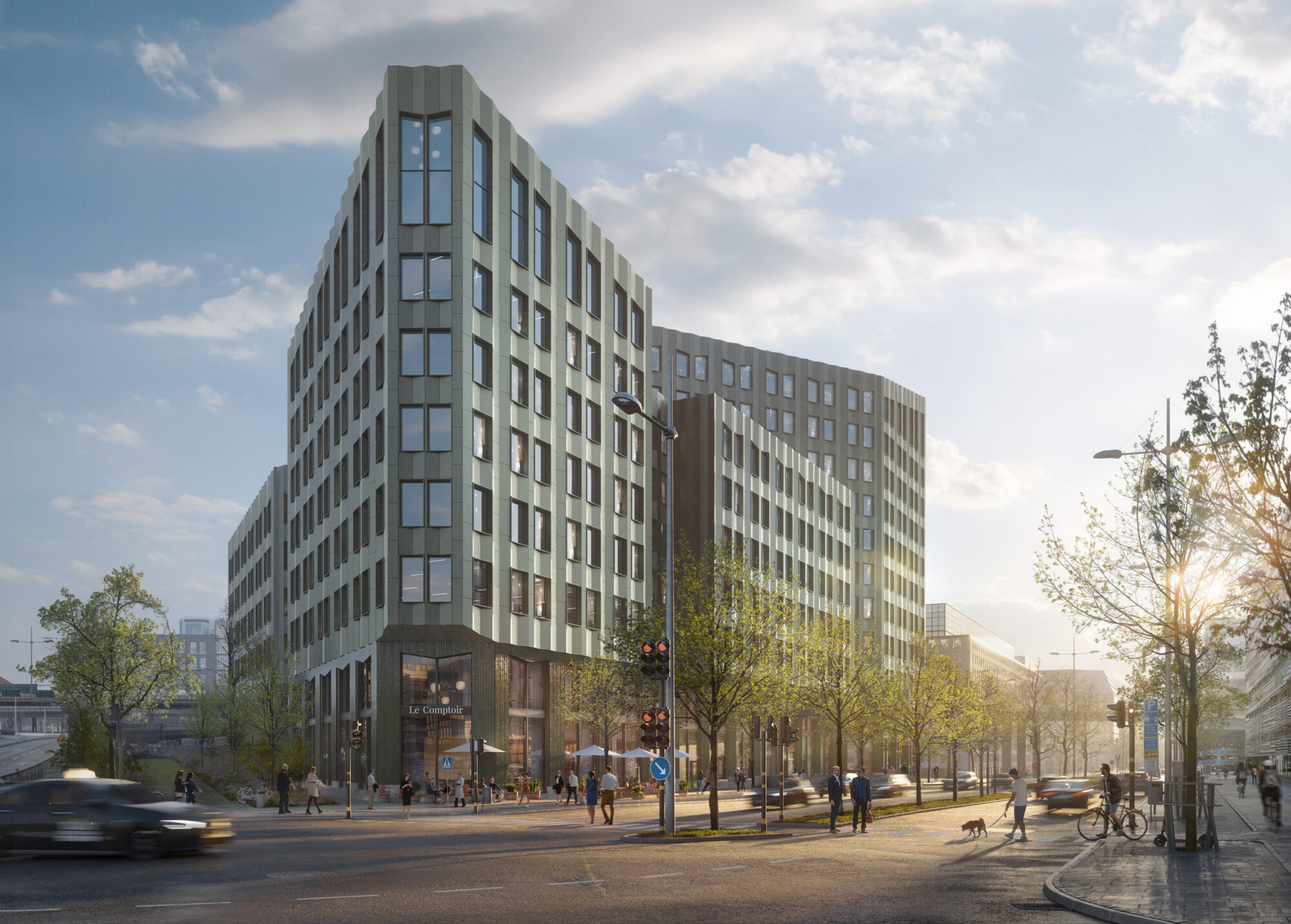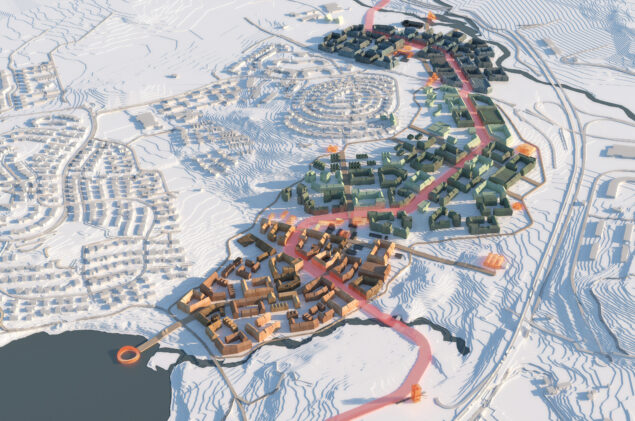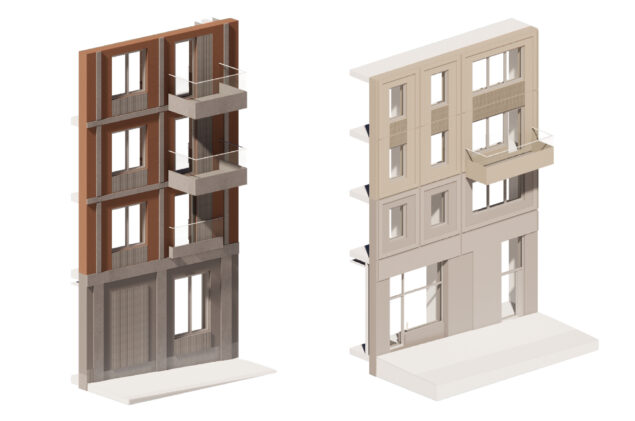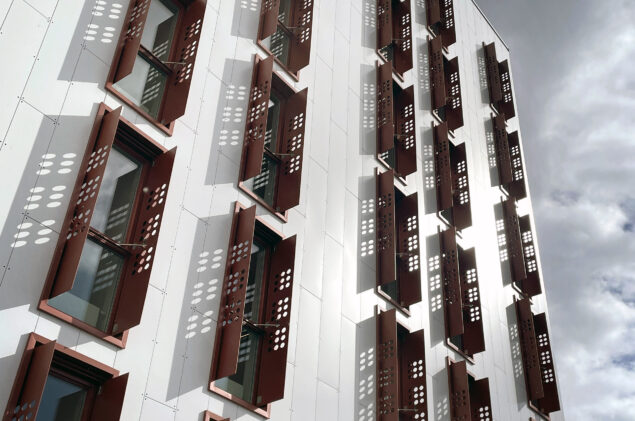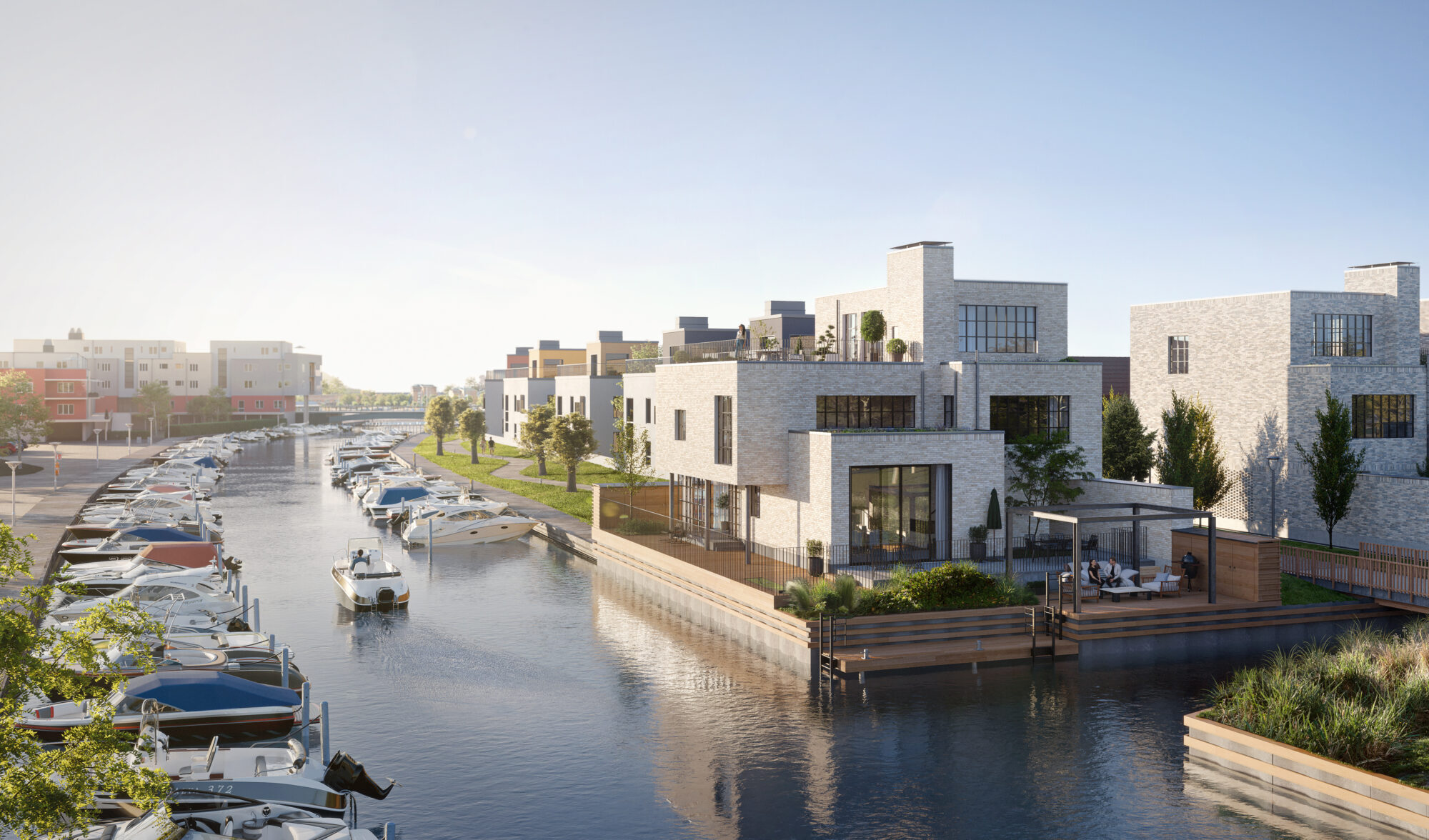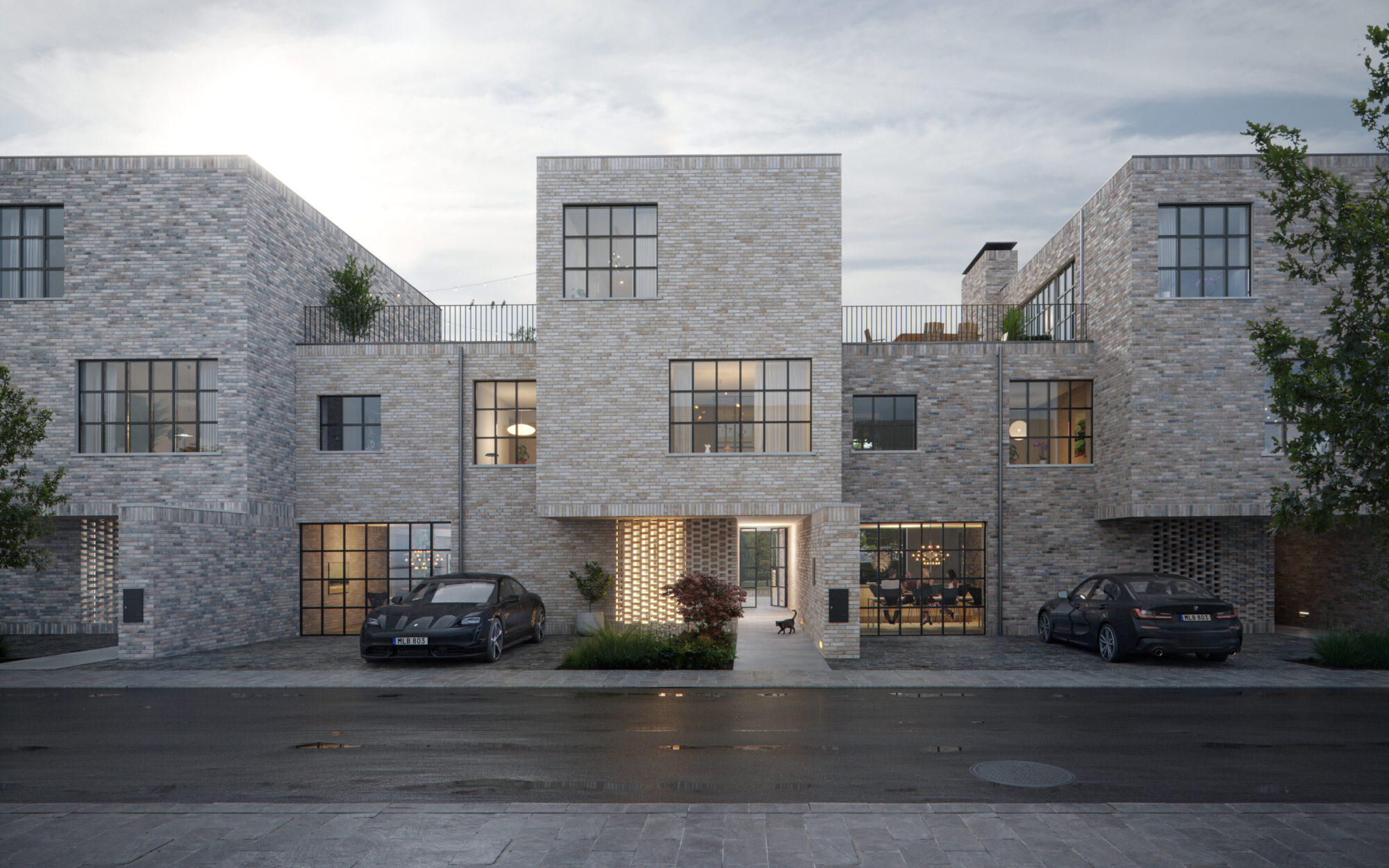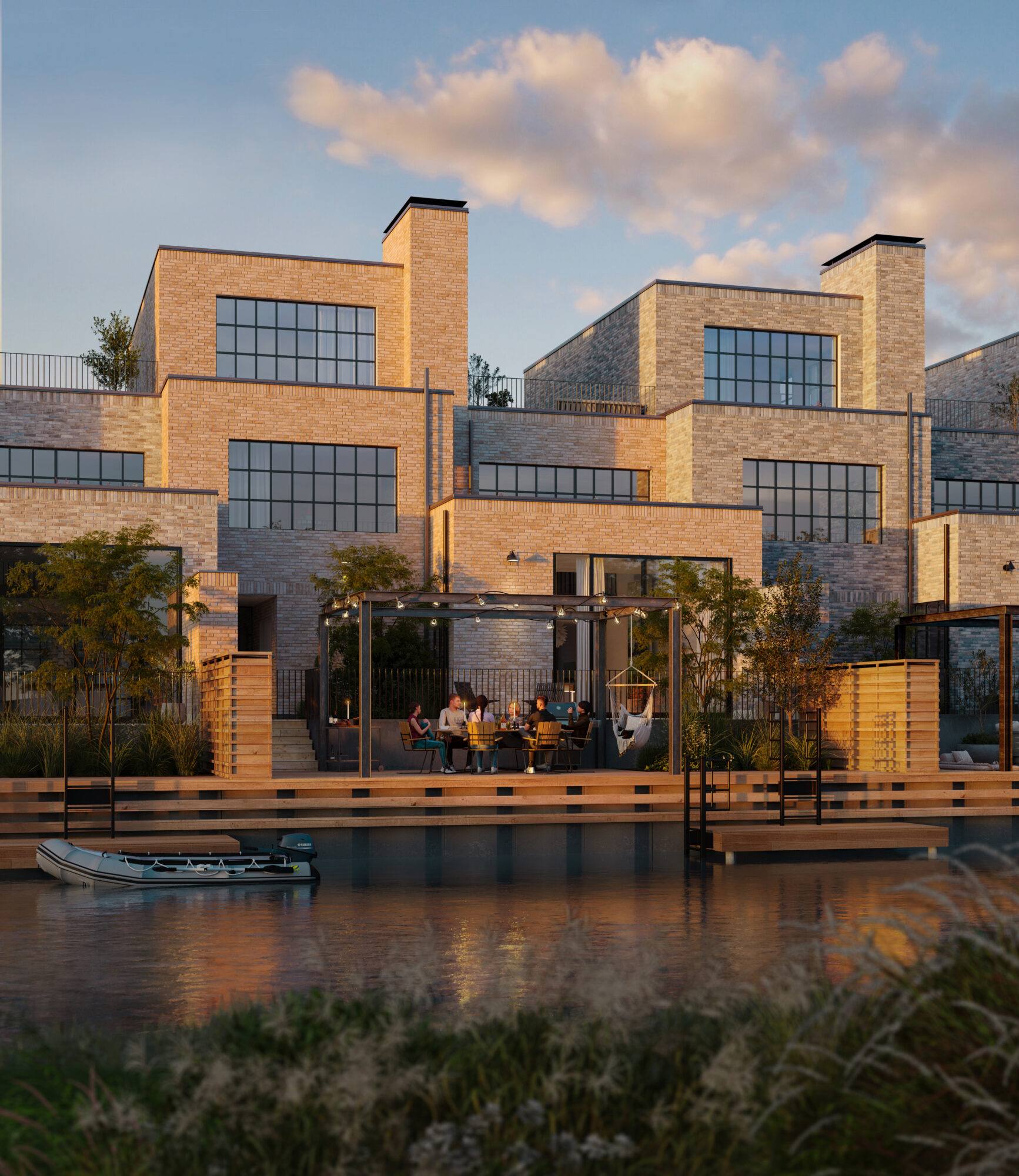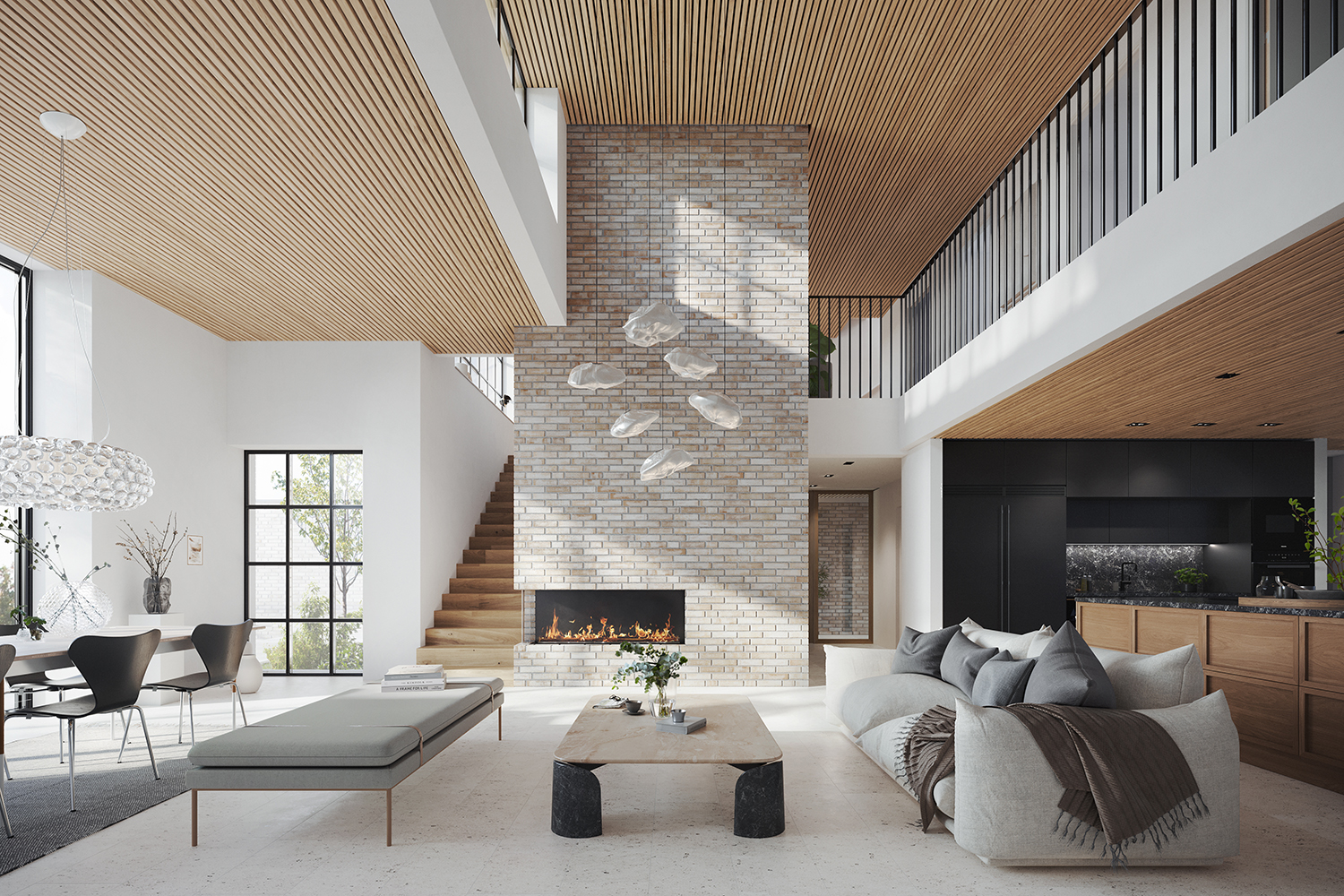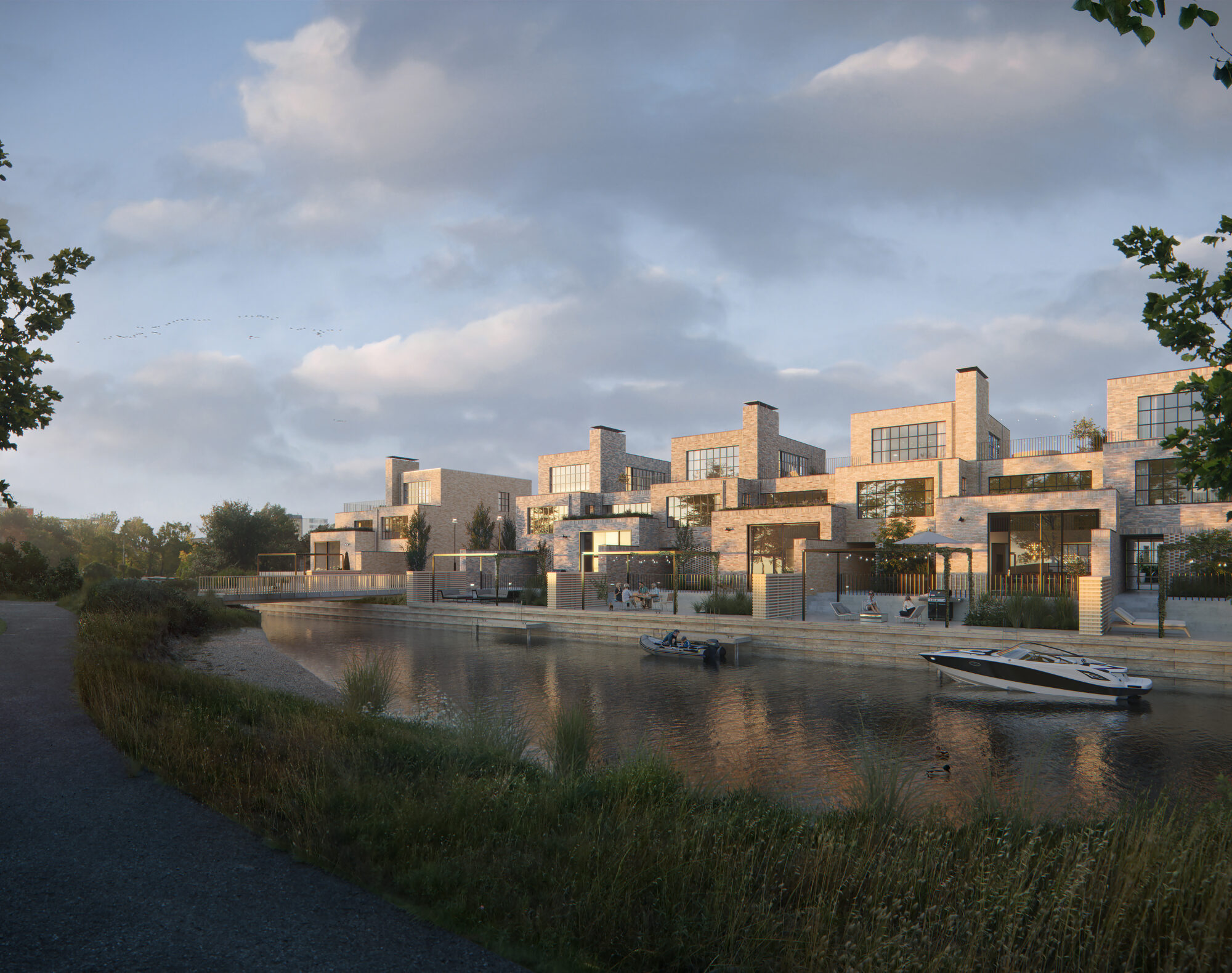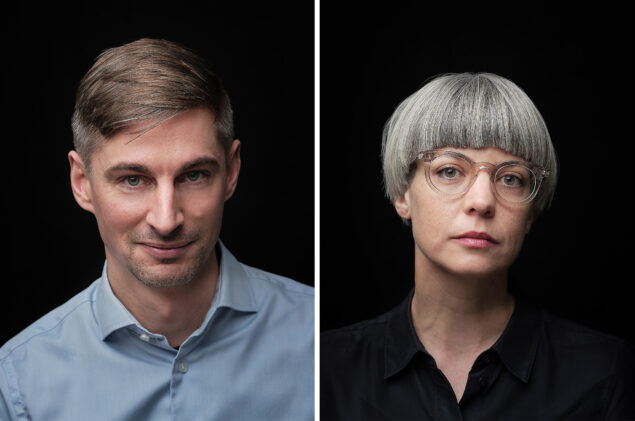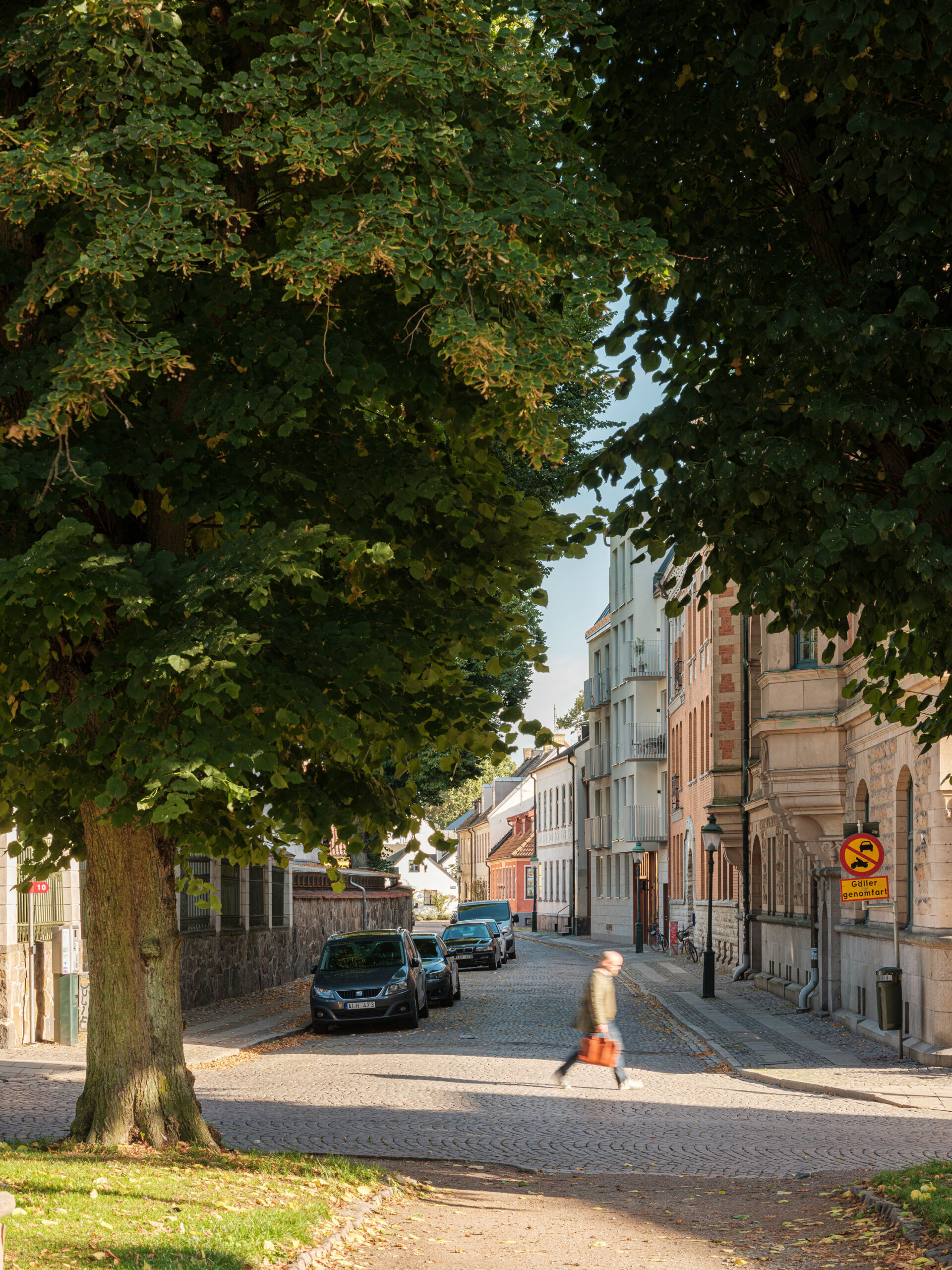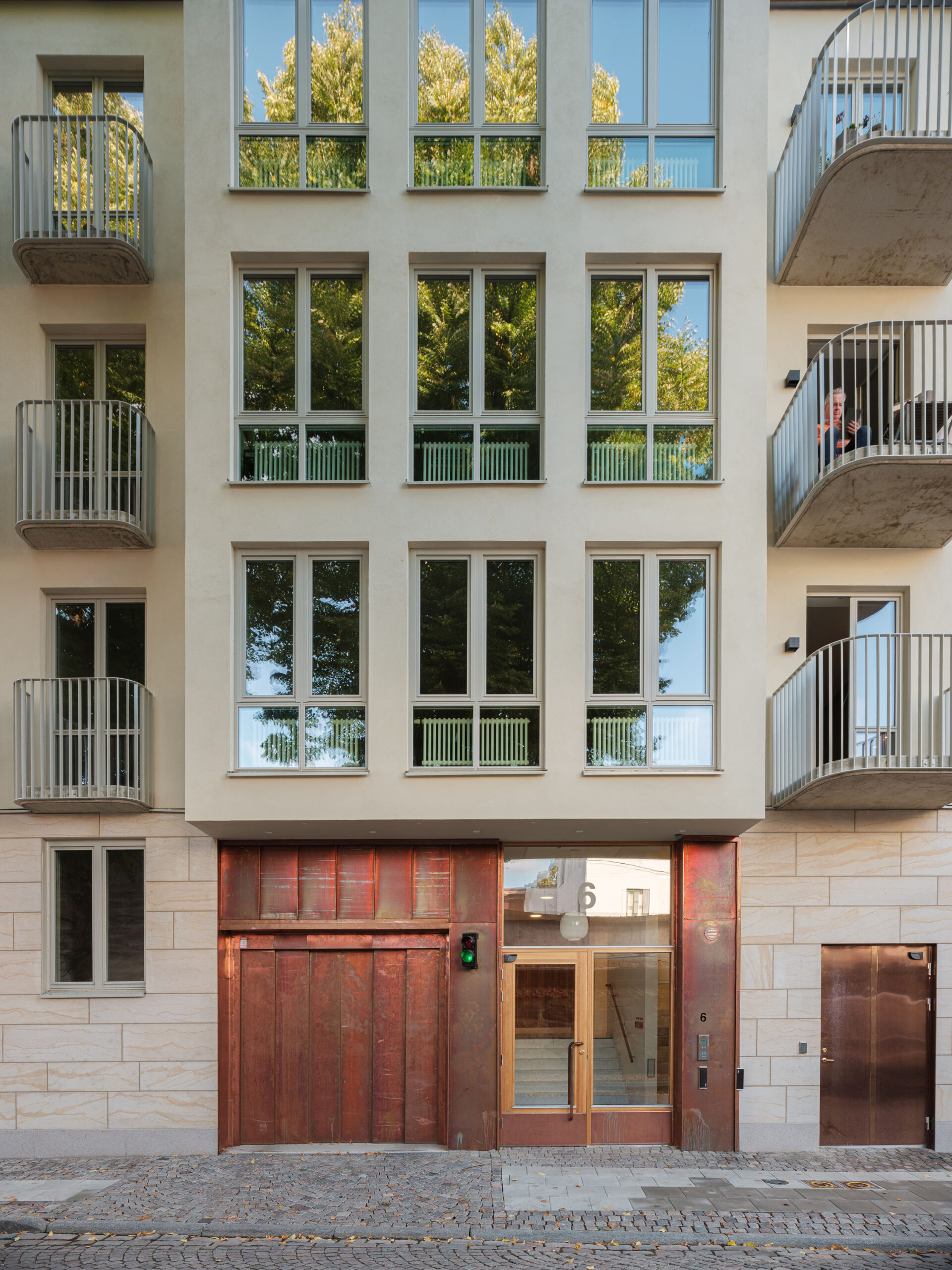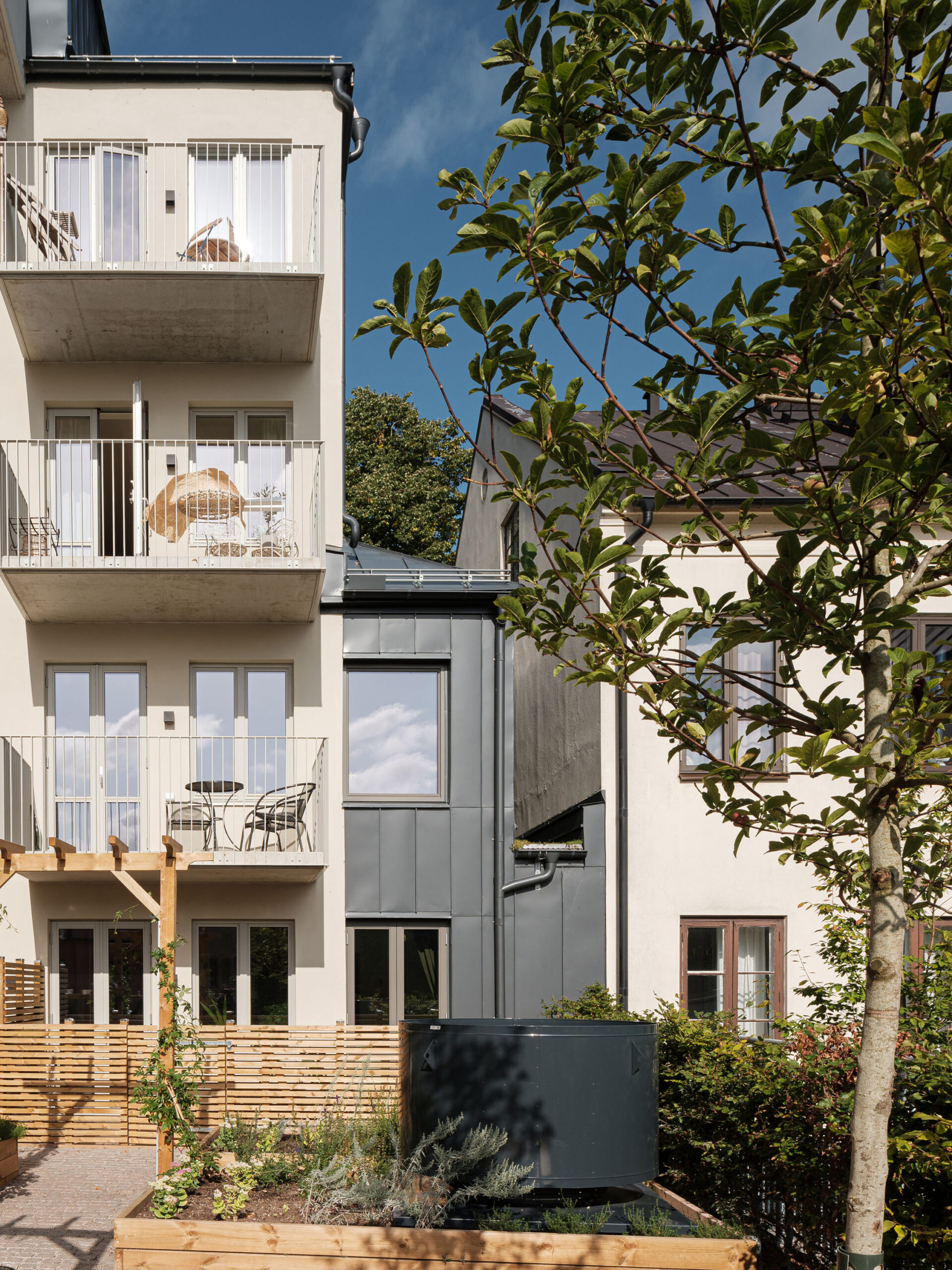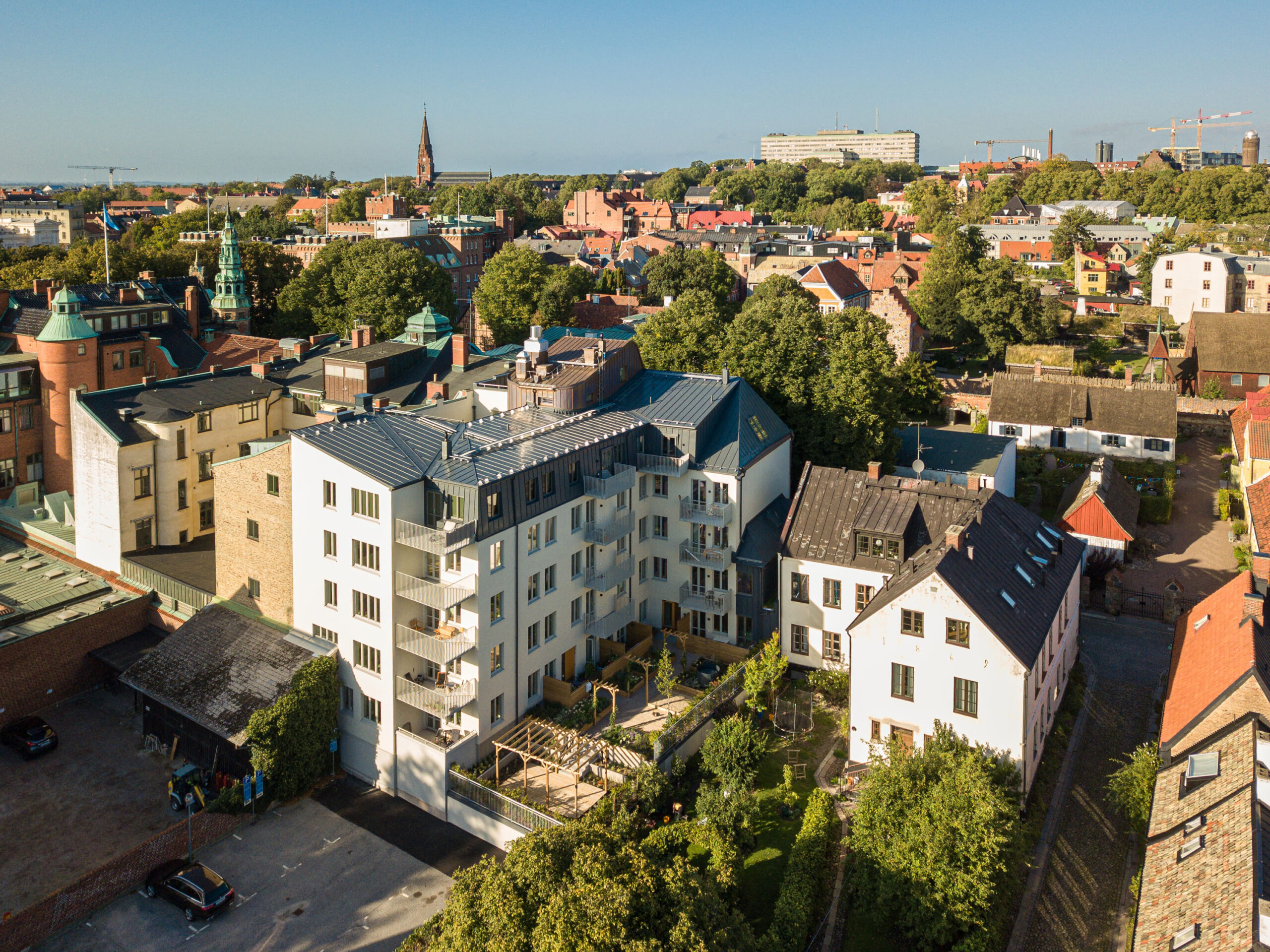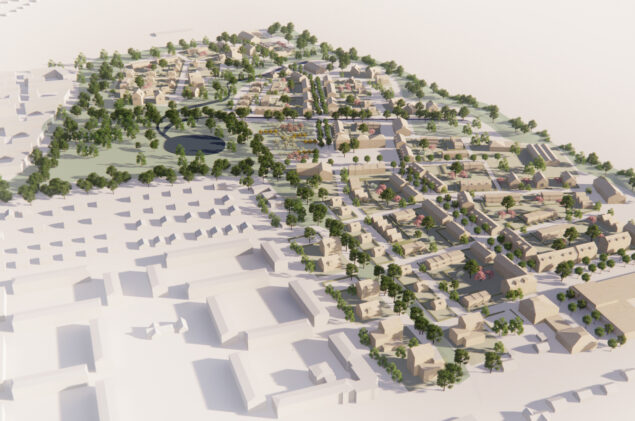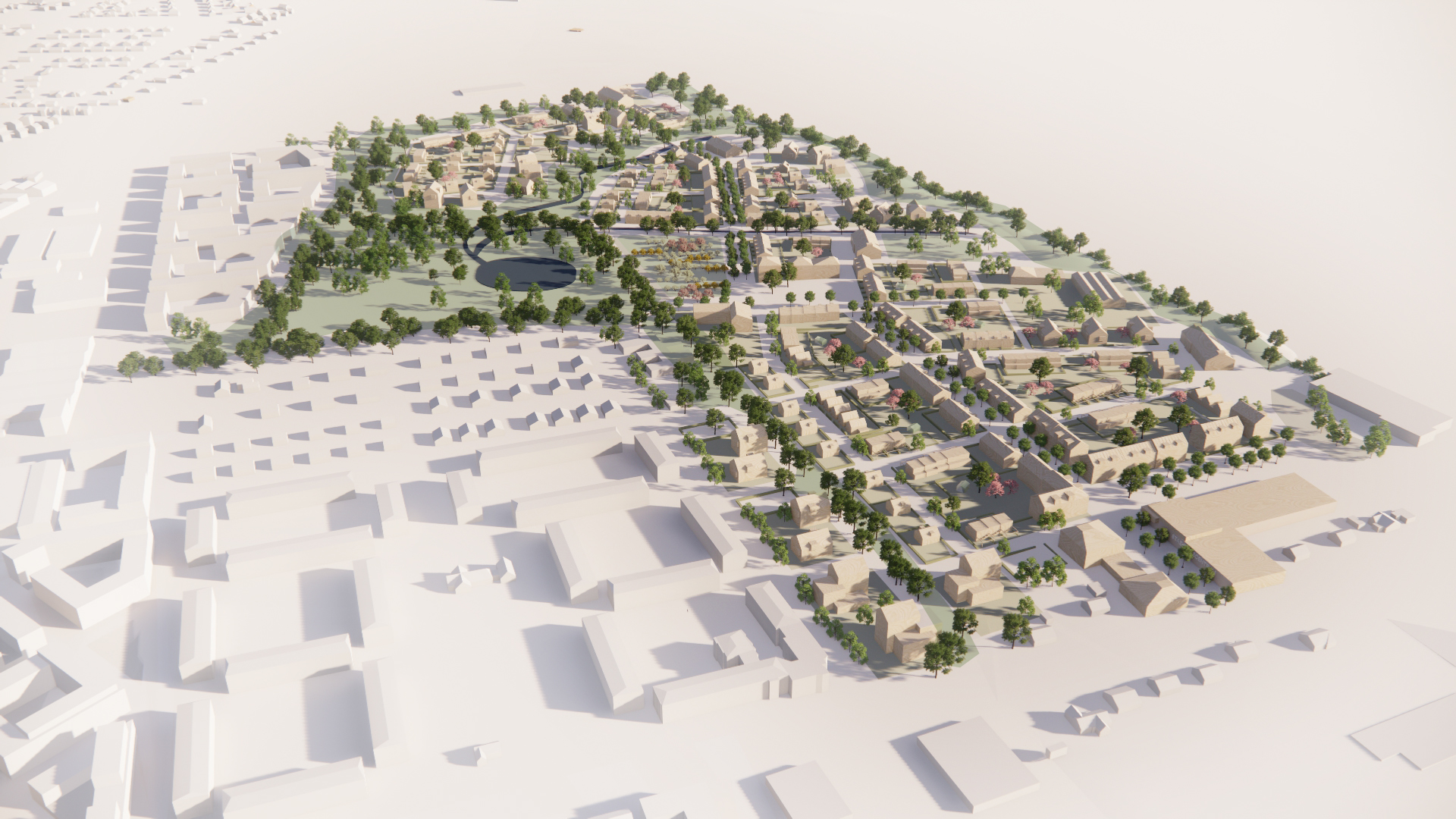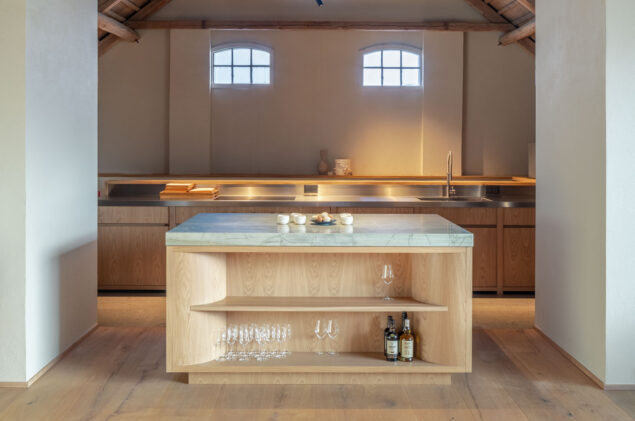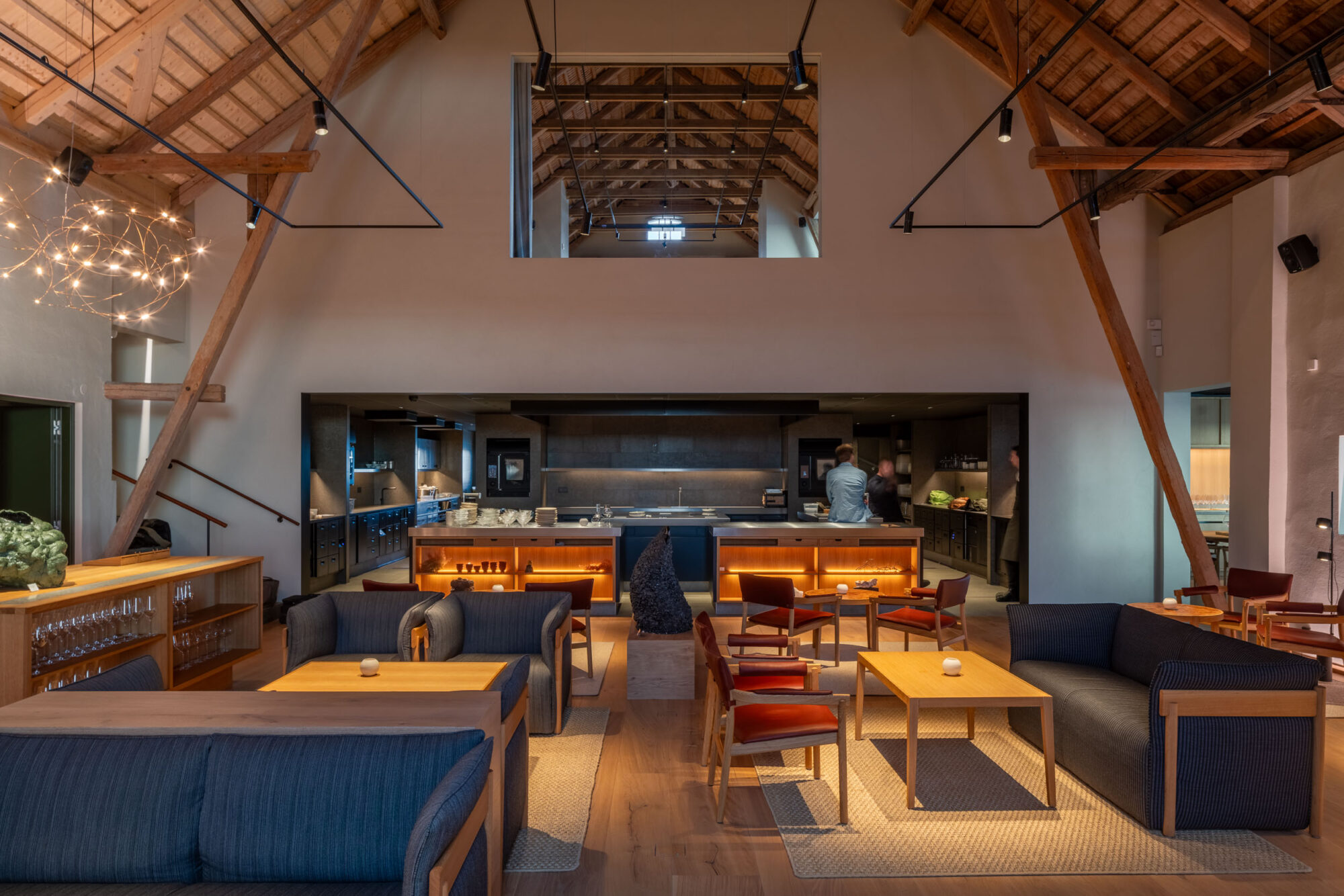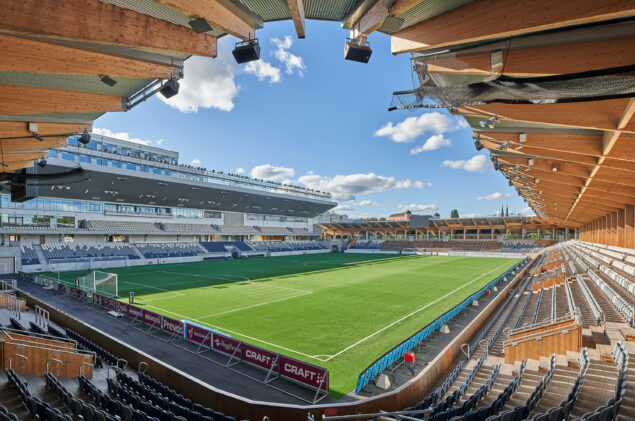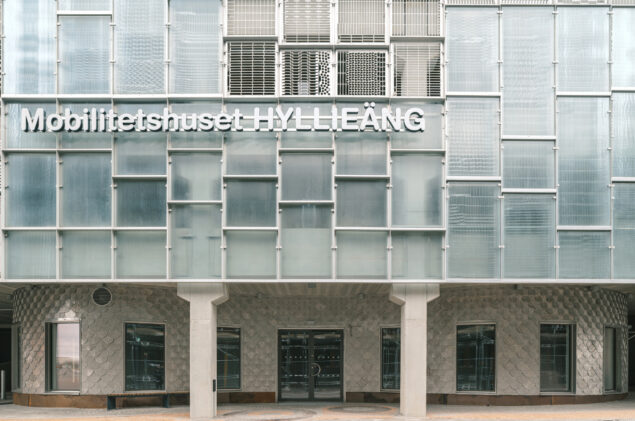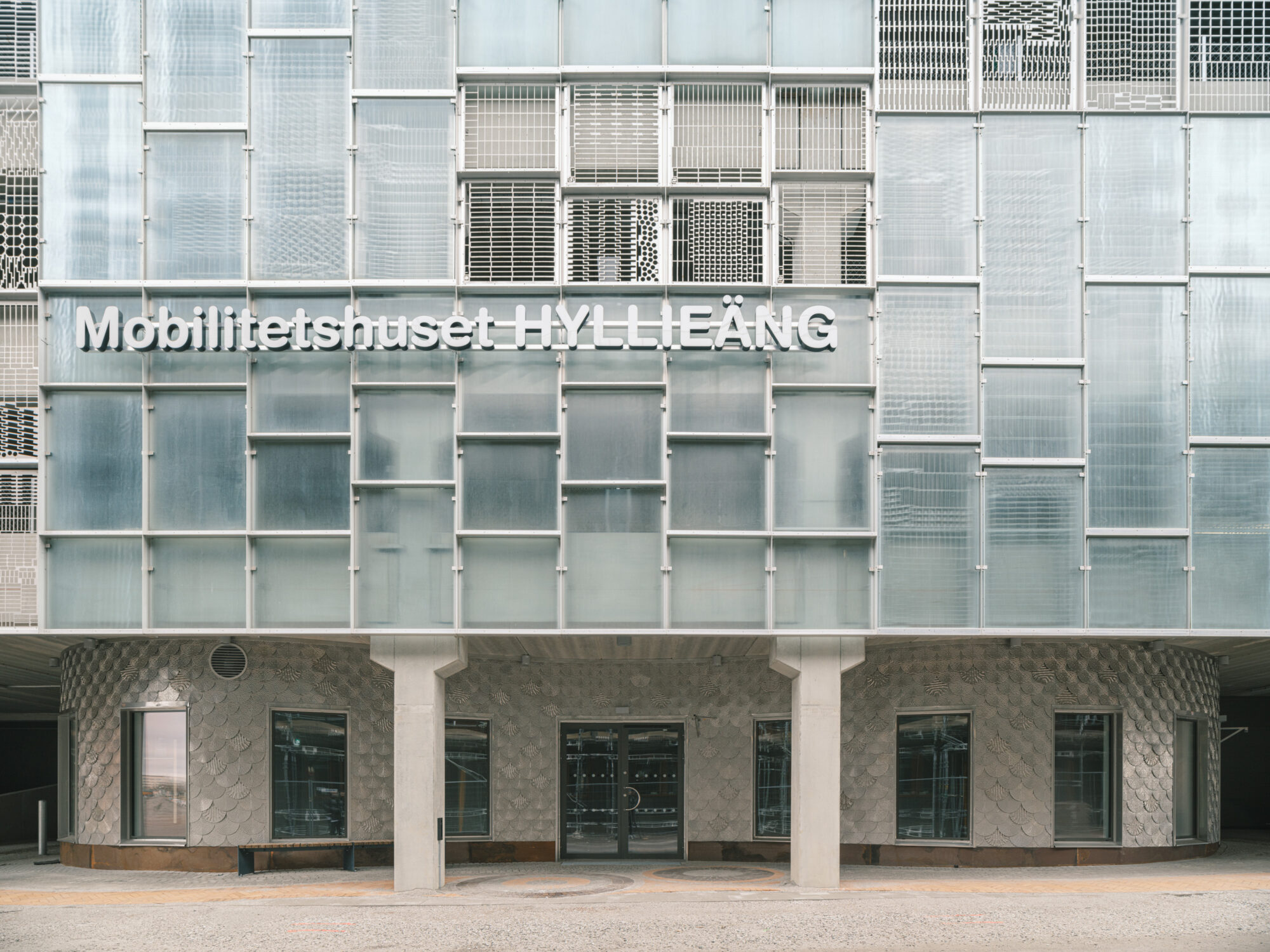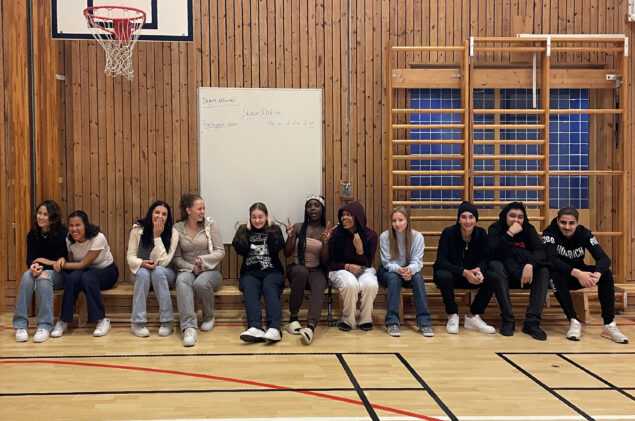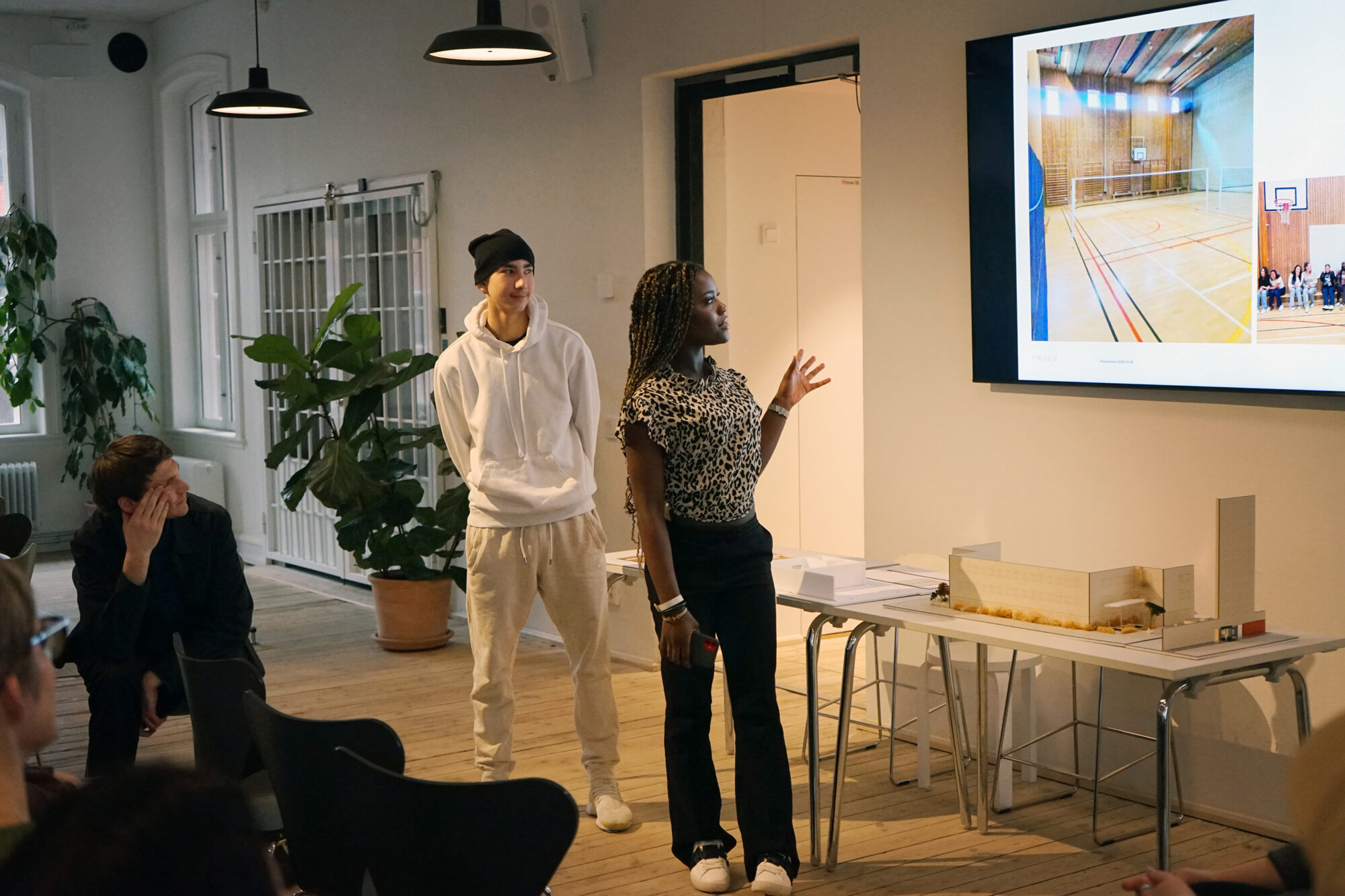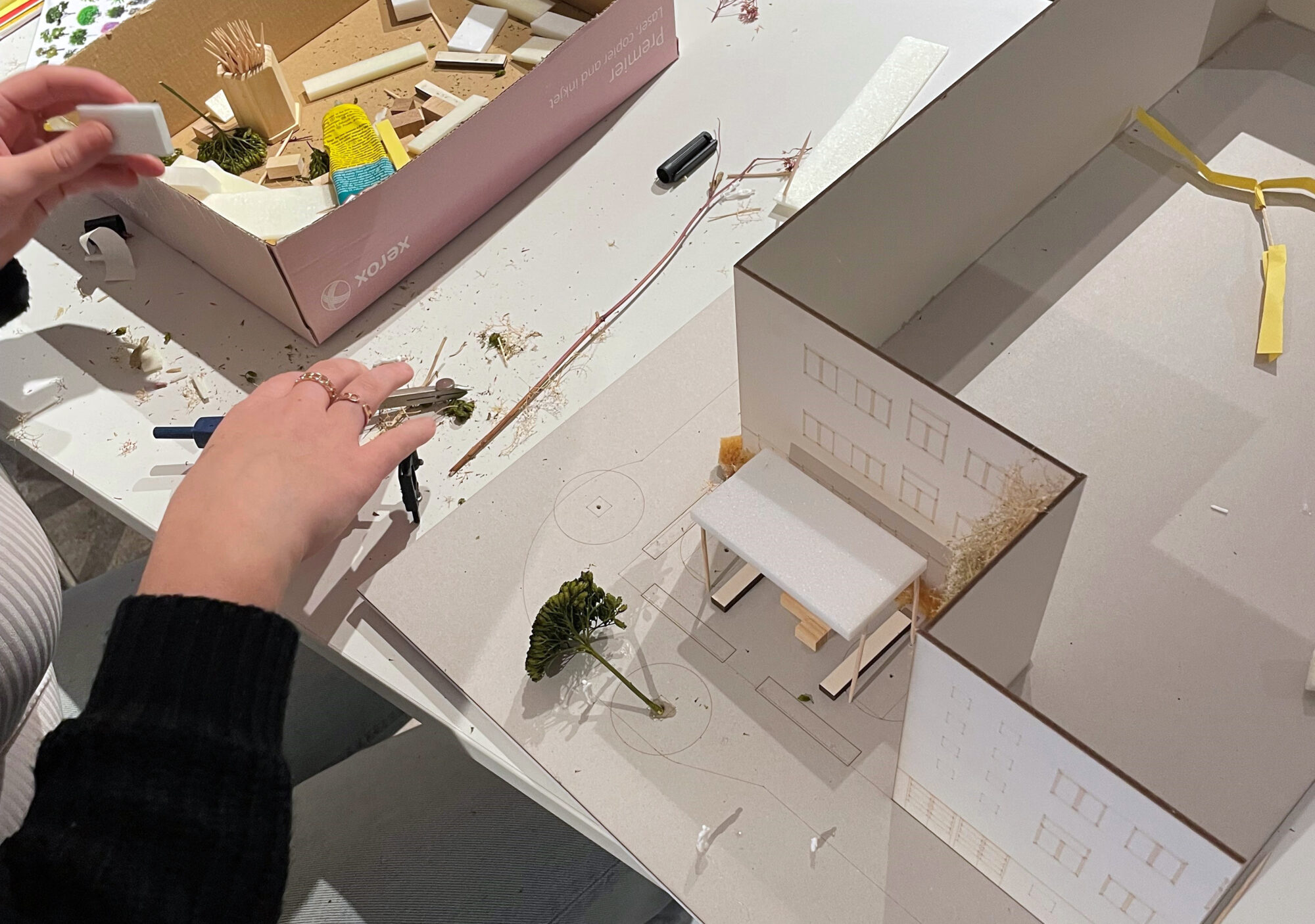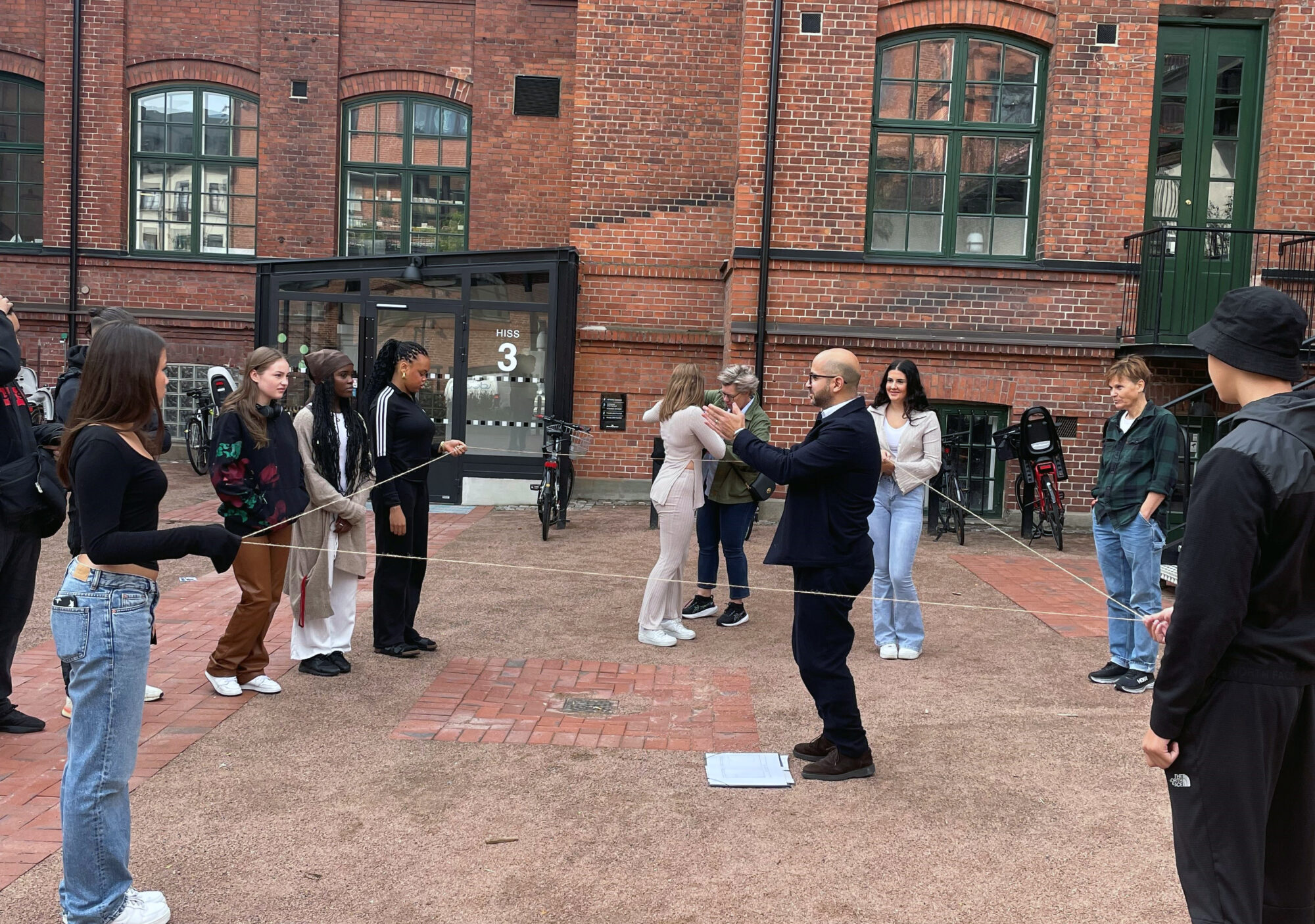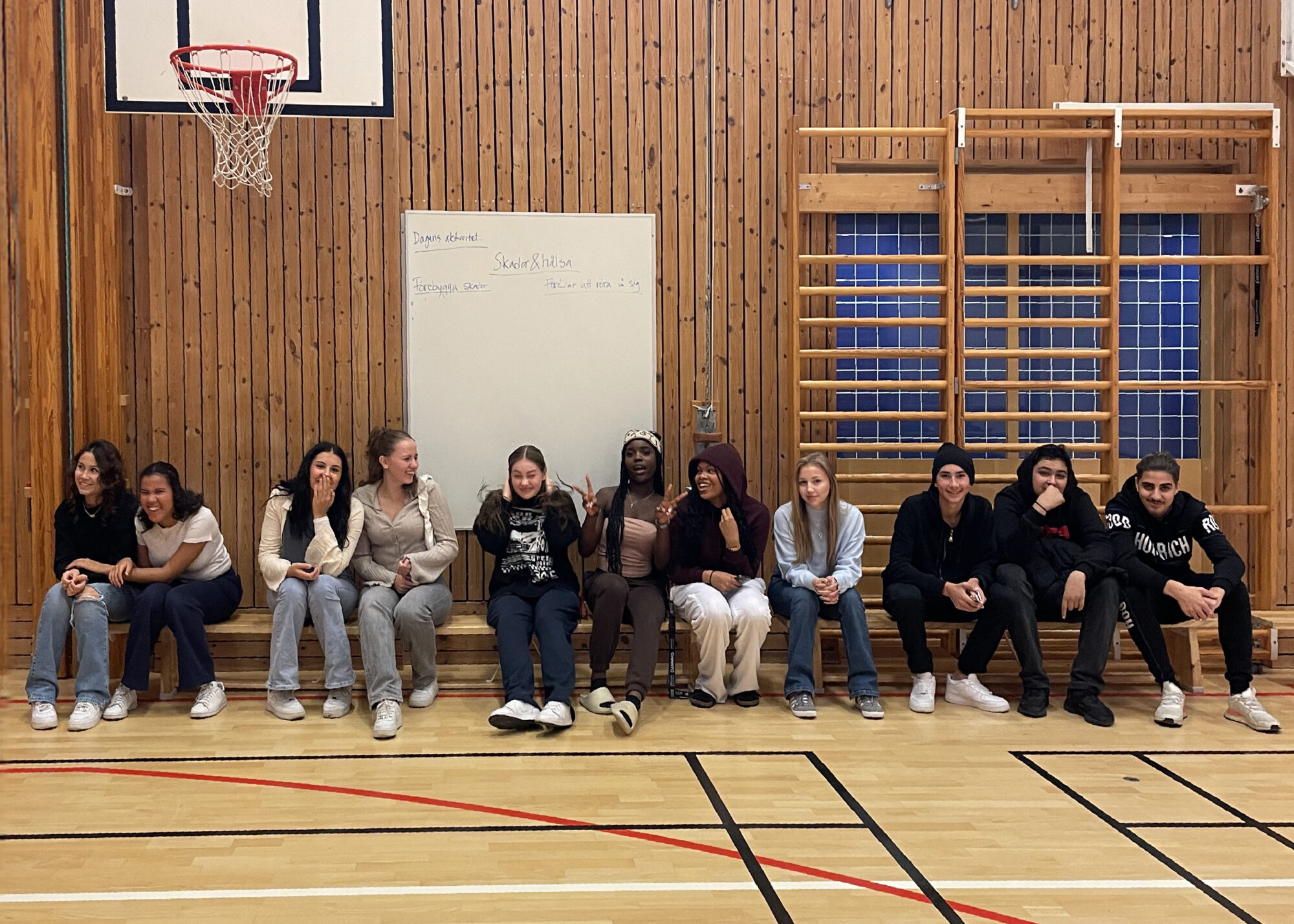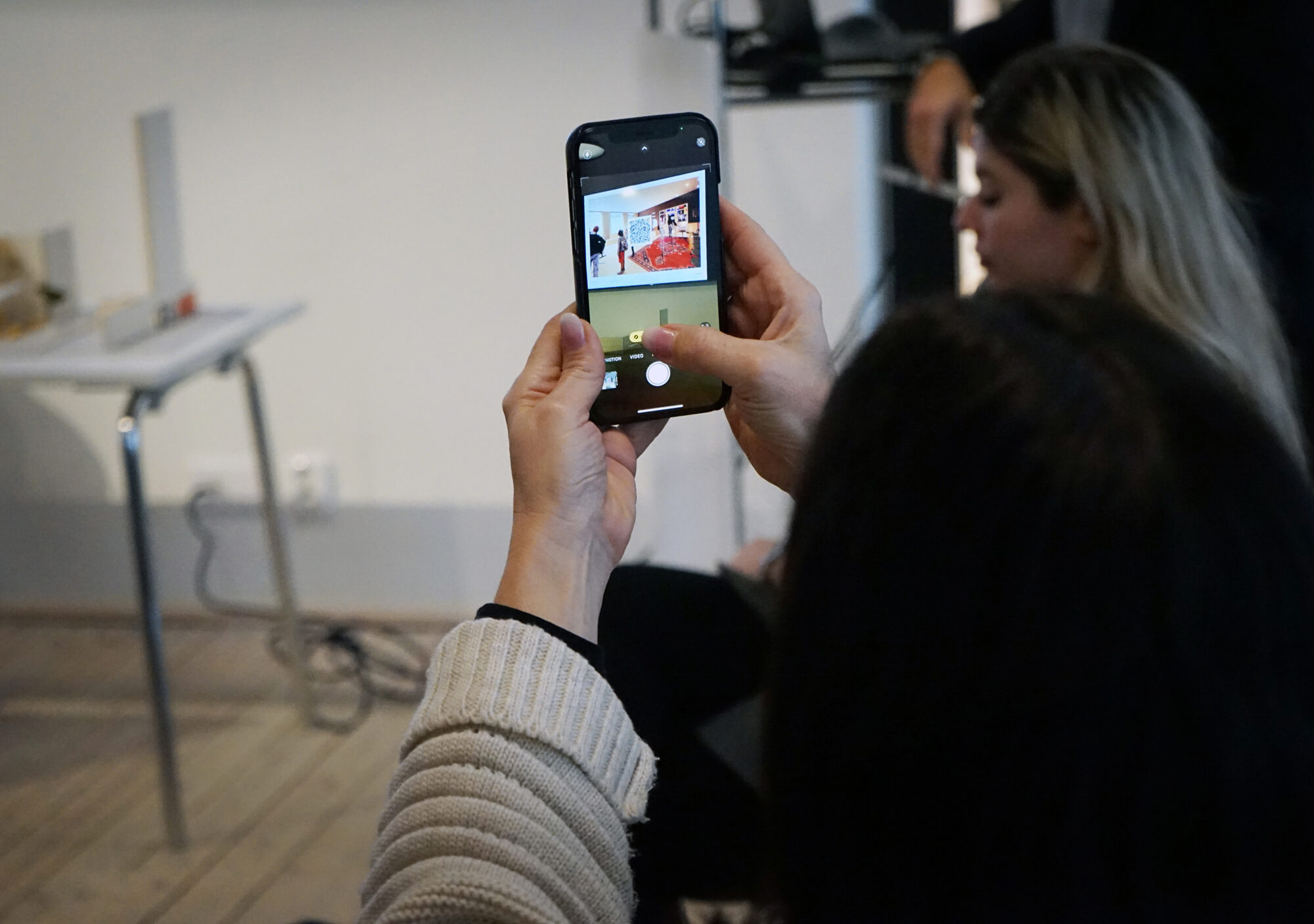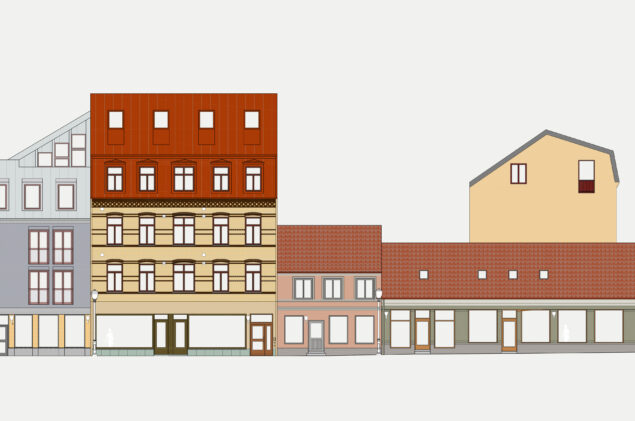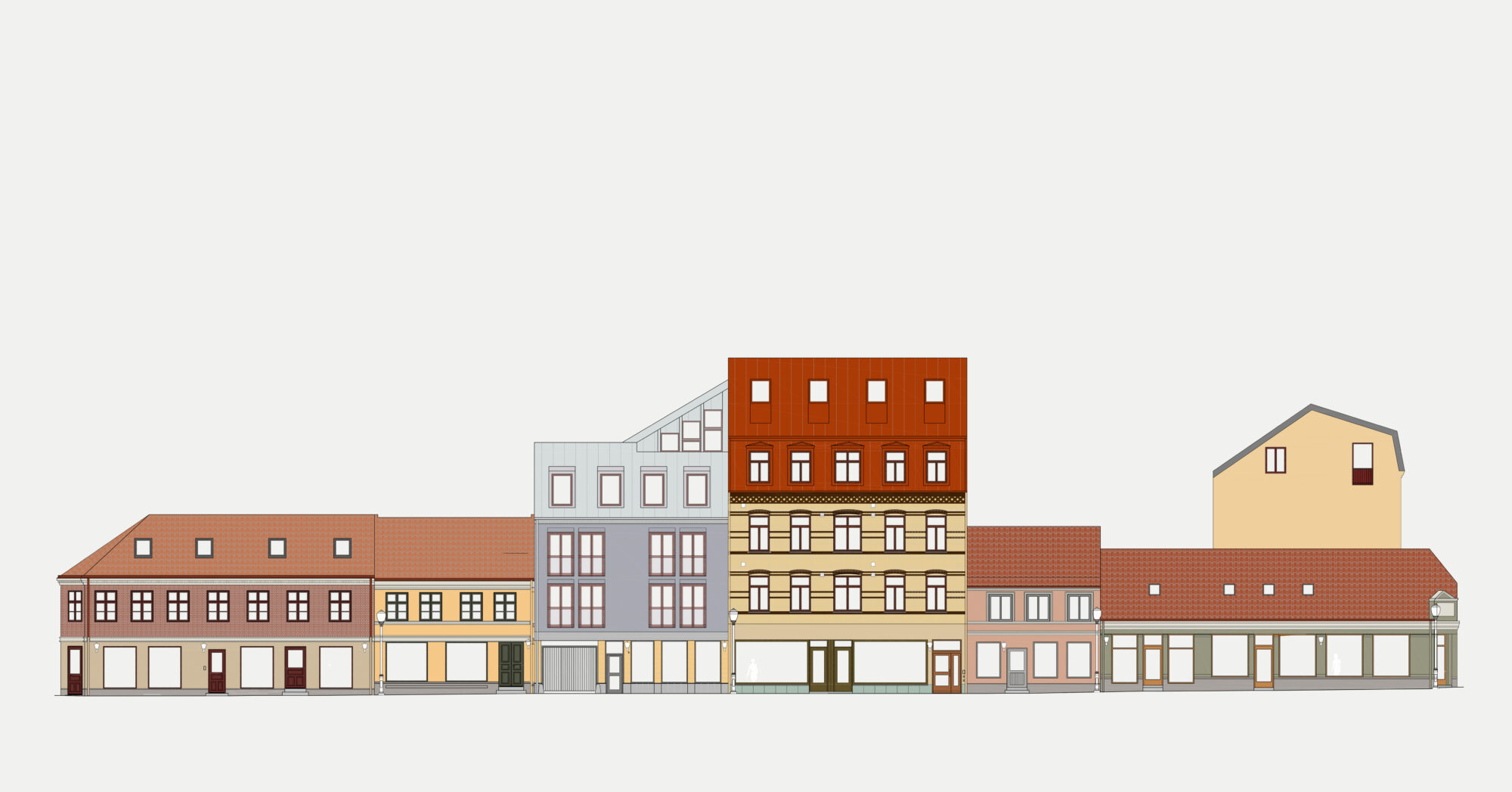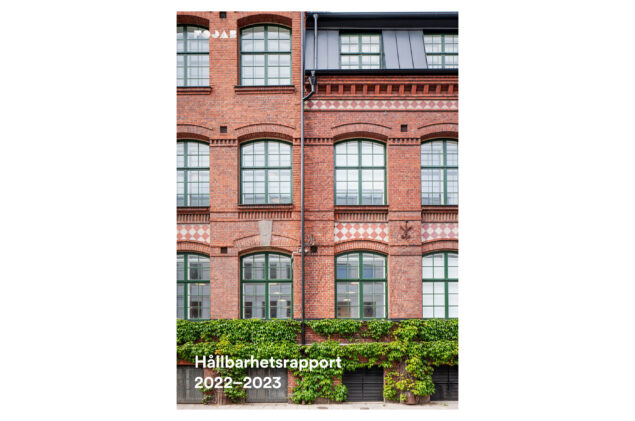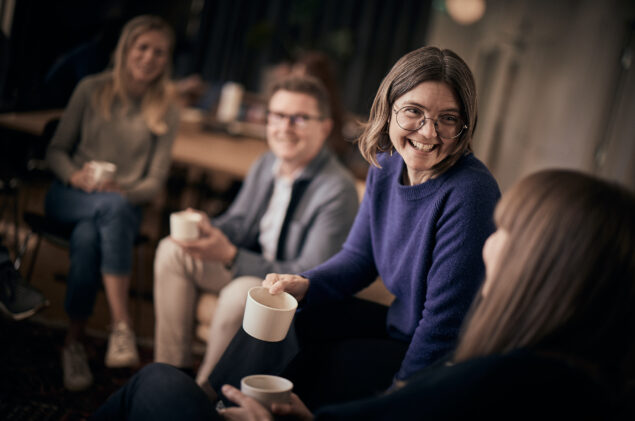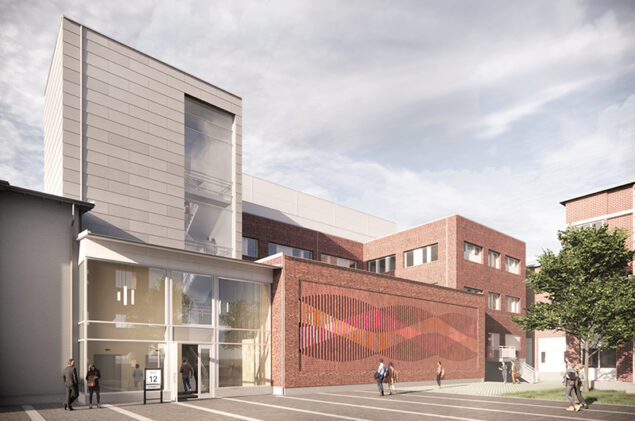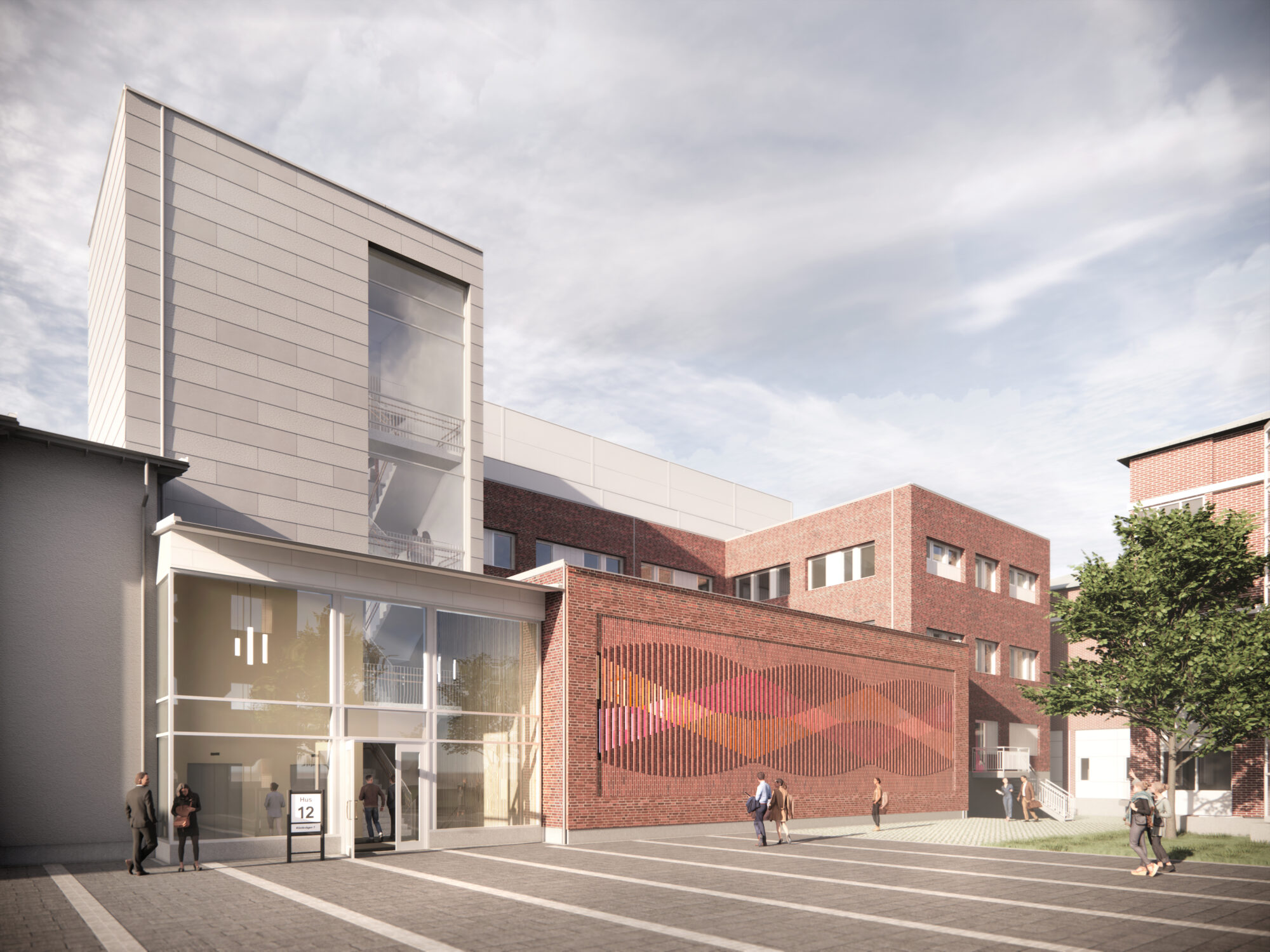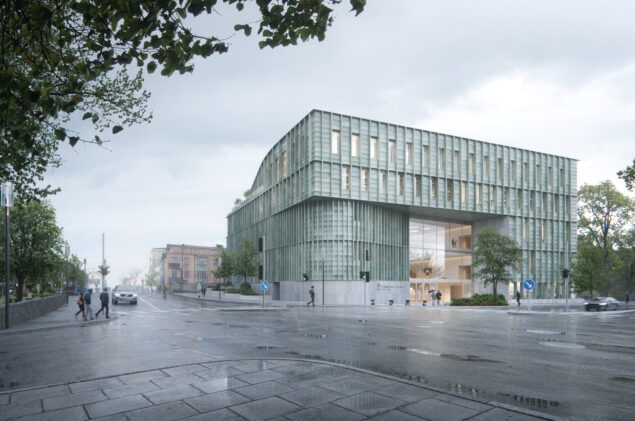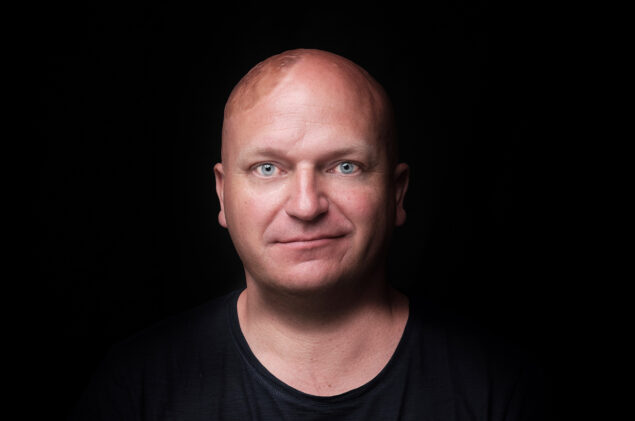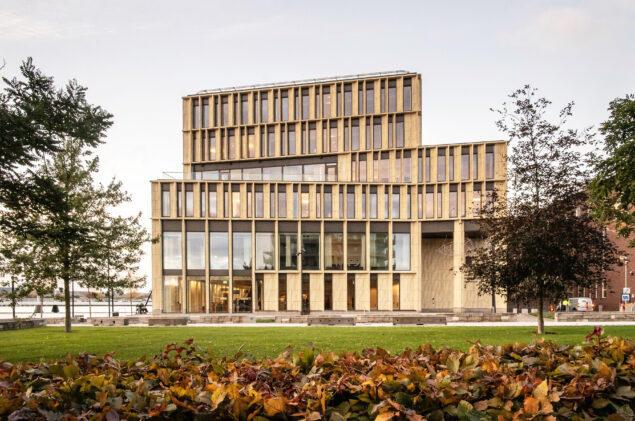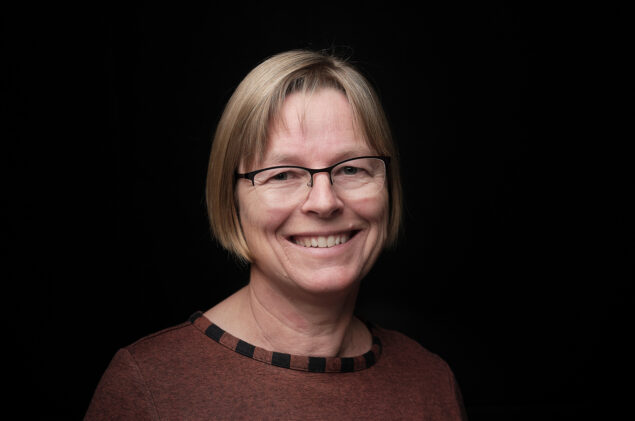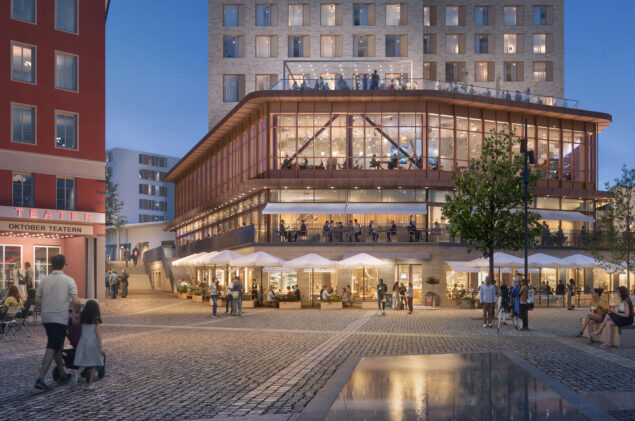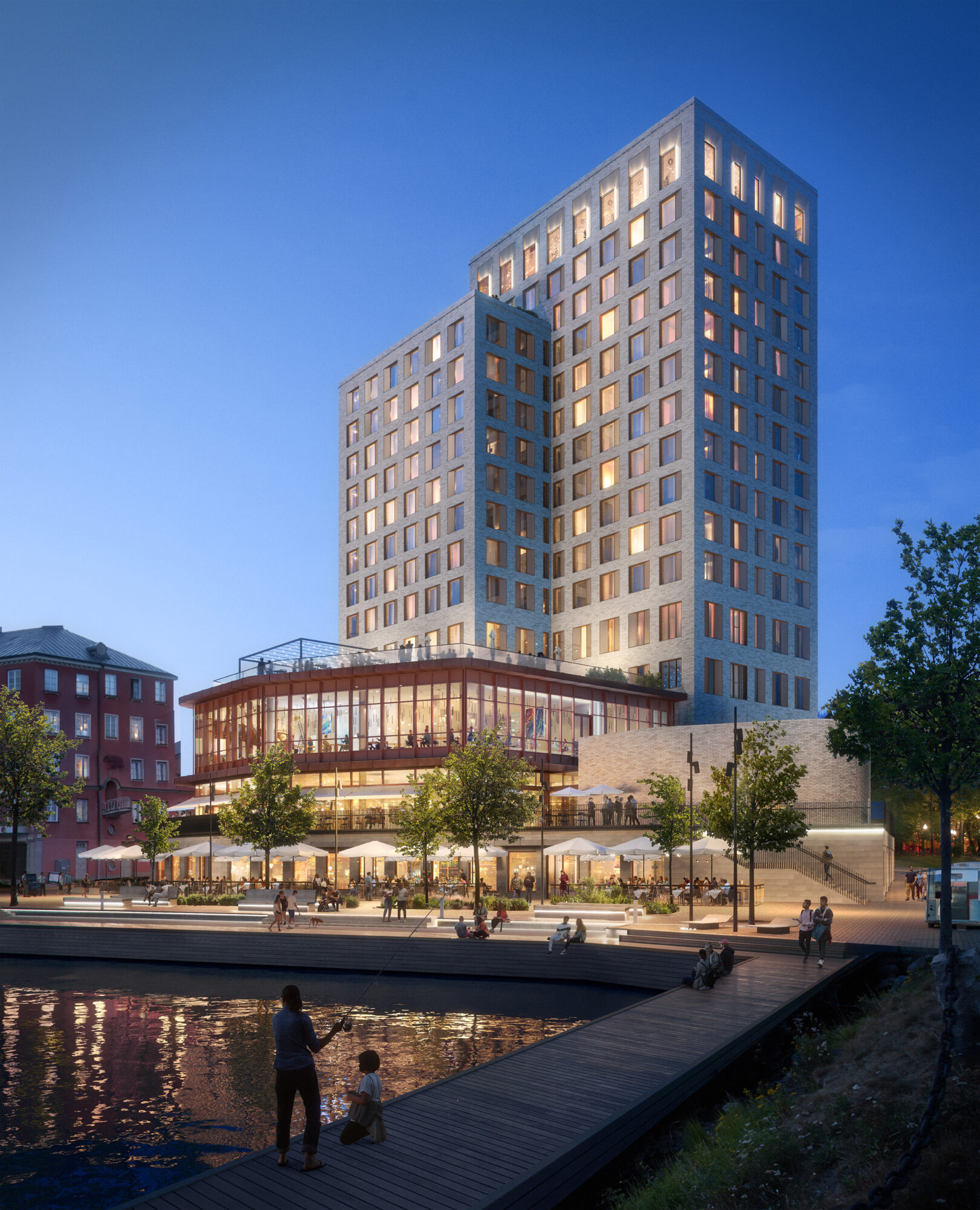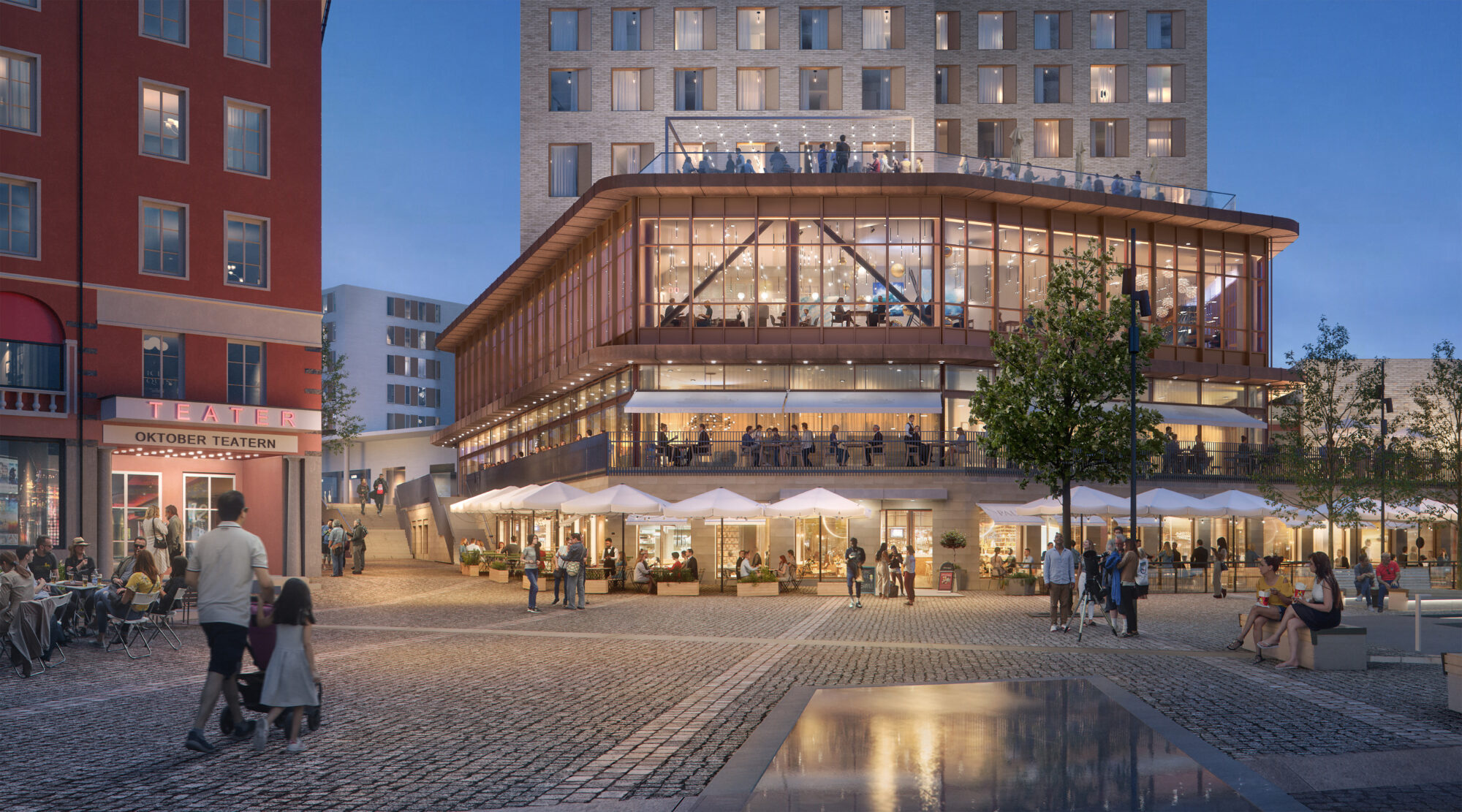2024-06-20
Nobelberget wins Nacka municipality's urban development award
Block 8 on Nobelberget, which FOJAB designed for Atrium Ljungberg, has been voted the winner of the 2023 Urban Design Award in Nacka.
The Urban Design Award recognizes beautiful, exciting and interesting buildings and sites in Nacka. Kvarter 8 is located at the top of Nobelberget and has a prominent role in the emergence of a new district in Sickla with 500 homes and space for trade and offices.
The location on the mountain has inspired the design. Sunlight and views have been carefully studied to ensure that the qualities of the surroundings in the apartments and in the external environment are really taken advantage of. In its motivation, Nacka Municipality highlights how the common and private spaces interact in the street environment, the pattern effect in the slate tiles of the facades and the inviting entrances.
- "This year we have a clear winner that tastefully contributes to strengthening the architectural diversity of Nacka. The slate tiles on the facades have been installed in a way that creates variation and a facade language that enhances the surroundings," says Johan Krogh (C), Chairman of the Environment and Urban Planning Committee.
- Our everyday architecture is so important that we are surrounded by quality. And here we have very nice examples of quality everyday architecture. It is interesting with slate in different colors on the facades that create variation and care, says Nacka municipality's city architect Nina Åman.
- For a project to be really good, it always requires an ambitious client and a good dialog. In Nobelberget kv 8, we have worked with Atrium Ljungberg to develop concepts for design, floor plans and interior design. We also want to highlight the clear vision for the whole of Nobelberget that Atrium Ljungberg has developed. It was easy to like it and get on board. We are proud to have contributed with a part of the development around Nobelberget and happy that it turned out so well. It is also extra fun that it is appreciated by the people of Nacka, says Jens Larsson, responsible architect at FOJAB.
The prize was awarded at a ceremony in Nacka City Hall.
2024-06-18
New life in old walls - shabby workshop becomes charming office
Before: a run-down workshop and laundry. Now: a modern office packed with charm. FOJAB has helped real estate company Hamiltone Fastigheter breathe new life into a run-down industrial building in Markaryd.
Staff were in tears when CEO Elijah Hamilton presented his idea to transform the dilapidated shack into the company's new headquarters.
Architect Anders Lundin at FOJAB, however, was enthusiastic.
- We saw the potential straight away. This could be a fantastic space with a unique feel. It was also in line with how we want to work at FOJAB: to avoid demolition and instead use and develop existing structures and turn them to their advantage.
The starting point was an industrial property of 22,000 square meters at the entrance to Markaryd in Småland. A large paved area with a few different warehouse and workshop buildings previously used by the Swedish Road Administration.
- The building was awful, both inside and out. Dark and cramped," says Elijah Hamilton.
However, the ambition of the architect and property owner was to make as few interventions as possible and keep the workshop feeling.
The surface layers have been replaced, the roof and floor have been additionally insulated, and geothermal heating and solar cells have been installed. The large doors of the laundry room have been converted to glass panels and the existing windows have been cut down to full height.
The old laundry room has been transformed into a modern co-working environment with both open spaces and rooms where you can close yourself off. In the center of the building, in what used to be the workshop, there is a large social room with a wood-burning stove, a sofa group and a large table where everyone can sit. Like a living room, but in office clothes.
The building's history is clearly present. Many details remain, such as an old traverse in the ceiling, a large electrical cabinet, a desk and a typewriter. The office furnishings from the previous office have been retained, while the social areas, meeting rooms, entrance and other open spaces have been furnished with second-hand furniture.
- The decor is locally rooted with an earthy color and material palette inspired by the Småland forest nearby. The large dining table is made from an oak tree that grew not far from the site. Some of the furniture is locally produced from a furniture manufacturer with a factory in Markaryd, says Kristin Henriksson, architect at FOJAB who has been responsible for the interior design.
Hamiltone Fastigheter moved in in January and two more companies are renting space. But there is room for more, and curiosity about the redevelopment is high.
- We've created something that didn't exist before in this location or even in this neighborhood. It will take some time to build the brand around the building, but we hope to recoup the investment once the office is fully leased," says Elijah Hamilton.
What is the deal for those who want to transform rather than build new?
- The business idea is to take something old that nobody wants and turn it into something that many more people want and are willing to pay for. In this case, we had low entry values that made it possible to cover the costs. Of course, it's more work to transform an existing building than to demolish and build a new one, but in return you get an environment that is completely unique," says Hamilton:
- We have an office that is highly appreciated by our employees, but also by our visitors, customers and partners. These are values that need to be included in the calculation, even if you may not initially calculate them.
The demand for transforming buildings will only increase, says Hamilton. Energy consumption is a big issue for tenants. It is more difficult to rent out premises in the older stock that has not been updated with energy-efficient measures.
- "Property owners with energy-hungry buildings will either have to sell to someone who can convert them, or do it themselves," he says.
There are certainly property owners who can shrug off the extra work and costs of renovation and transformation, Elijah Hamilton believes, especially if they cannot immediately see the potential.
- "Property owners are generally not very visionary," he says. They manage rather than change. But I would really encourage other property owners to get help from someone who can!
- "There are probably a lot of properties that the owners don't think are worth anything, but which can become unique places that people are prepared to pay a lot for. As architects, we have a trained eye and a special competence to see the possibilities," says Anders Lundin at FOJAB.
2024-06-10
FOJAB launches new tool for greening cities
How much can the amount of greenery in our cities increase? FOJAB's new Treeable tool is based on the 3-30-300 rule and identifies where new trees can be planted to achieve a higher canopy cover in the existing urban environment.
Trees and greenery make people feel good. Proximity to green spaces is strongly linked to reduced risk of, for example, cardiovascular disease, premature death and stress-related diseases. Greenery is also important for biodiversity, trees lower temperatures in cities, slow down rainfall and improve air quality.
Many cities are now looking at the amount of greenery and opportunities to increase the number of trees not only when planning new areas but also in existing city blocks. FOJAB has developed a methodology and a digital tool to identify land suitable for tree planting and to understand the factors that hinder and promote greening. The tool takes into account underground utility structures, current land use and protective distances to buildings, streets and utilities.
The Treeable tool is based on the 3-30-300 rule, a measure of greenness used in planning healthy cities. It means that everyone should be able to see at least 3 trees from every home, school and workplace, every neighborhood should have at least 30% canopy cover and there should be a maximum of 300 meters to a green space from every home.
Treeable has been tested in a study of three neighborhoods in Malmö. The study shows that there are plenty of areas in central cities such as street parking lots, lawns and rest areas that can be planted with trees with simple means. FOJAB presents proposals for measures that increase the degree of greenery and where the trees should be placed to achieve the greatest benefits. Solutions such as completely rebuilding streets and removing all ground parking were also analyzed, to see what this could mean for tree cover potential.
- There are a lot of interests in the dense city and trees often get squeezed. The study conducted in Malmö both showed the possibilities to change the way we work and identified the areas that are actually available for tree planting," says Patrick Bellan, tree specialist at the Property and Street Office in Malmö.
FOJAB also compared Malmö's tree planting regulations with Amsterdam, Berlin and New York, three dense cities that are significantly greener than Malmö. All three have smaller setbacks from utilities, buildings and streets than Malmö, showing that there are good opportunities for the city of Malmö - and likely other Swedish cities - to increase greenery.
The Malmö study also shows how important it is to consider greenery early on when planning new neighborhoods.
- "Our analysis shows that it is relatively easy to increase canopy cover in existing central neighborhoods. However, in the planning of new urban areas, we need to ensure that trees are prioritized much higher and earlier in the process - well before cars and parking lots," says Malin Ingemarsdotter, landscape architect at FOJAB.
Want to know more about Treeable? Get in touch:
Magdalena Hedman
e-mail: magdalena.hedman@fojab.se
tel: +46 708 47 05 50
Malin Ingemarsdotter
e-mail: malin.ingemarsdotter@fojab.se
tel: +46 733 23 26 25
2024-05-31
Parking garage with facade of scrap waste finalist for Malmö Stadsbyggnadspris
The Hyllieäng Mobility House is one of five finalists for the Malmö Stadsbyggnadspris 2024. With its façade made of waste materials and recycled materials from the local area, FOJAB explores what an aesthetic for our time can mean.
FOJAB's and client Parkering Malmö's joint ambition with the Hyllieäng mobility building is to explore and challenge the limits of reuse. The material for the facade is mainly sourced from outside the construction industry and at the same time super local, i.e. within Malmö.
- European Commission President Ursula von der Leyen has called for a new aesthetic for our times, combining style with sustainability. With Hyllieäng, we explore what such an aesthetic could mean. Instead of the design principle form follows function we have tried a new approach, namely form follows avaliability. It is of course very nice that the City of Malmö recognizes and appreciates it with this fine nomination, says Petra Jenning, responsible architect for Hyllieäng and development manager at FOJAB.
The 2,400-square-meter facade consists of panels made of glass formerly used at the Orkanen Teachers' College and stainless steel sheets with laser-cut patterns that are scrap waste from the local manufacturing industry. The undulating exterior walls at ground level are clad with a mountain panel of recycled sheet metal, which is waste material from the production of plate heat exchangers. The façade is also designed to be dismantled and the material reused even more.
The Urban Design Award is given to architecture and urban design projects that are sustainable, inclusive and beautiful living environments. The winner will be announced in September.
2024-05-24
Modern Art Nouveau takes place on Kungsholmen with the new Olivin office building
Like a shimmering green jewel, Olivin will shine as one of Stockholm's most attractive office buildings. The final decisions have now been made on the design of the pleated facade. FOJAB has designed the office building on the so-called triangle plot on Kungsholmen for Skanska after parallel assignments.
Ground has been broken in the Lindhagenskvarteren district in northwestern Kungsholmen, one of the last major developments in Stockholm's inner city. The area will be linked to the urban structure of eastern Kungsholmen, bringing previously separate islands of development closer together.
This is where the new Olivin office building plays an important role. When the triangular plot with Essingeleden on one side, Lindhagensgatan on the other and residential buildings on the third side is now developed, a missing piece of the puzzle is finally put in place.
- The streetscape has been broken with a gap on Lindhagensgatan that Olivin is healing. The street will have more of an esplanade character with living facades on both sides - as Albert Lindhagen originally intended in the city plan from the 1870s," says responsible architect Ylva Åborg at FOJAB.
Olivin will be a proud brand building that acts as a unifying node for the area. A clear destination with content that attracts both workers and visitors and creates new flows in the city. Olivin is a building for work, socializing and recreation with workplaces, social areas, sauna and roof terraces. The entrance floor invites people along Lindhagensgatan with public spaces on the ground floor. The offices start one level up but trickle down to the ground floor with shared spaces and activities that create an active building and a safer street space.
- The building's design language is linked both to the historic city plan and to the triangular shape of the site. The design is stripped down and stringent but with modern and playful elements - a kind of modern Art Nouveau that brings nature into the design and connects to the time when Lindhagensgatan was built, says Ylva Åborg.
Inspiration is drawn from the green stone olivine and its angular, slightly sharp shape. The prism as a geometric figure recurs in all scales, in folds and reliefs on the facade and in the division of the 23,000 square meter volume into several smaller units. The building is higher towards Essingeleden, while it is stepped down towards the small-scale buildings to the southeast. The corners are cut to create a more inviting form that relates better to Stockholm's classic building order.
- And even if the scale is broken down, the building should be perceived as a monolith and the different parts as a whole," says Ylva Åborg.
Skanska's ambition is LEED Platinum environmental certification. Parts of the frame will be built in wood. The building will be ready for occupation in 2026.
2024-05-22
FOJAB leads the way for sustainable urban development in Iceland
Swedish architects FOJAB will help the City of Reykjavik set a new standard for sustainable urban development in Iceland. Work is now underway to design the Keldur district.
FOJAB and Ramböll won an open international competition last year with the proposal Crafting Keldur - Where Art, Science & Recreation Unite. The competition brief was to develop a structural plan and development strategy for the Keldur district in eastern Reykjavik, characterized by an attractive urban structure, sustainable urban development and climate neutrality in harmony with the nature and landscape of the site.
Now the next step is taken. FOJAB has been awarded the entire planning assignment. In a first stage, the competition proposal will be deepened and refined in a development plan and guidelines for the design will be developed in a design manual. Several studies will be carried out to ensure that the ambitious climate goals are achieved.
Iceland aims to be climate neutral by 2040. This requires, among other things, a change in transportation, as many people are currently dependent on cars. The new Keldur district will lead the way for a sustainable lifestyle. Within a few years, the area will be served by a new bus rapid transit system, Borgarlína, which will connect Keldur to the city center and other key locations in the metropolitan area.
The competition proposal is based on a dense and flexible urban structure with proximity to nature, the university and the city. The proposal also included strategies to create a social mix in the district. The buildings have a human scale - three to five storeys - but are dense and cohesive enough to create a vibrant and dynamic city.
- Schools and services should be within walking or cycling distance in Keldur. It is best to take the bus to work. Making sustainable everyday choices should be easy, enjoyable and obvious. FOJAB has a great deal of expertise in sustainable urban development, both in terms of mobility and creating attractive environments, which we look forward to sharing with Reykjavik," says architect Magdalena Hedman at FOJAB.
2024-05-17
Groundbreaking for carefully designed neighborhood in Årstaberg
The final pieces of the Årstaberg development puzzle are now being put in place. On Friday, the ground was broken for the buildings closest to the commuter train station. On behalf of Wallenstam, FOJAB has designed the block that forms a new front towards central Stockholm.
A new residential area is emerging in the old industrial area at Årstaberg station, with around 1,000 homes, a school and a neighborhood park. FOJAB has designed one of the last blocks to be built for Wallenstam. It consists of three buildings around an enclosed courtyard and a point building and contains just over 400 rental apartments.
Powerful scale
The conditions are not the easiest. The scale of the area is powerful, between 7 and 25 floors, which is significantly higher than the usual in Stockholm. Right next to it, the main line, Södra länken, tvärbanan and a regional bicycle route pass by, and a bit further away is Essingeleden. The pulse is high around the clock. For noise reasons, the detailed plan therefore stipulates that concrete elements should be used as a facade material.
- "We have paid great attention to the experience of the buildings from different distances," says Anna Thorell, architect at FOJAB. The neighborhood is located on a hill and can be seen all the way from Västerbron, and becomes an element in the city's silhouette. At the same time, those walking or cycling past should not be overwhelmed by the scale.
Rhythm and repetition
The neighborhood should also be experienced at different speeds.
- When you arrive by train from the south, this is about the time you look up and out and start looking around for your jacket and bag before you arrive at Centralen, says Anna Thorell.
The facades are detailed in several layers and at different levels, to work at a distance and up close, at a fast pace and at a slow pace. The prescribed concrete elements have been given a clear rhythm and repetition. The joints are thoughtfully placed and are part of the design that is visible from afar. Reliefs and different surface structures create shadow play at close range. The glazed balconies on two sides of the high-rise building are eye-catching, while the wooden facade behind the glass provides a comfortable feeling for the residents.
Beneficial public life
Ground floor premises with all kinds of services will add a beneficial public life to the site.
- One of the buildings will house a grocery store, and hopefully a restaurant, a pharmacy and perhaps a hair salon. In the other buildings, there will be additional premises, including a restaurant or a café facing the new park," says Anna Thorell.
A new urban front
In addition to interacting with each other, the buildings tie the surrounding blocks together. With its muted color scheme in relation to its neighbors, the block forms an elegant front for the area and a new urban front for Stockholm.
2024-05-14
Poetry of movement - FOJAB drives new ways of designing sports environments
How can sports halls be made more inclusive and multifunctional so that more people are attracted to exercise? Architects at FOJAB will investigate this together with the City of Malmö, researchers, users and cultural practitioners. The research project Movement Poetry is funded by Formas.
Physical activity is essential for good and equitable health. At the same time, we are generally less active and the gap between those who are physically active and those who are not is growing. Buildings and spaces for sport can be found in many parts of our cities and communities and should be important and attractive places for everyone. But far from everyone uses them. The problem is largely about a lack of well-functioning spaces, rather than a lack of spaces.
Movement Poetry is a collaboration between architects at FOJAB, researchers in sports science, diversity issues and place development at Malmö and Lund University, and the leisure administration at the City of Malmö. The project has been granted funding from Formas within the call Gestaltad livsmiljö för hälsa och välbefinnande.
Together with artists, cultural practitioners and not least those who use - or do not use - the places today, they will explore how an innovative and sensory design can add new values to traditionally designed sports environments and open up for a broader and more inclusive use.
- There is a great need for sporting environments and we want to maintain the sporting function. But we also see a need to problematize the design of sports environments, which are often designed based on certain norms and expectations. By adding more values, more people can be attracted to movement," says Emma Pihl, project manager for Rörelsepoesi and architect at FOJAB.
The project will create and disseminate knowledge about new ways to design sports environments so that they can contribute to increased physical activity for everyone, not least for groups that do not move much today.
- The proportion of children and young people who are active in sports should increase and sporting activities are also largely unevenly distributed, in terms of both socio-economics and gender. By taking new steps in the development of our sports areas, we are trying to achieve a more equal and accessible range of leisure activities," says Thomas Sterner, Head of Department at the City of Malmö's Leisure Services.
Many halls around the country are facing renovation and one goal of the Movement Poetry project is also to show how, through the transformation and refinement of what already exists in a sustainable way, environments can be created that open up for more uses, functions and users, rather than building new ones.
The benefits are not just about improved physical health.
- By making sports environments more attractive to more people, we can ultimately also reduce loneliness, increase social contacts, increase safety and create more vibrant and attractive cities," says Emma Pihl at FOJAB.
2024-04-05
Taking the FOJAB office into the future
What is a sustainable office? Is it reasonable from a climate perspective to have your own office space while sitting at home half the time? How can design help increase creativity and efficiency? We had a chat with Anders Eriksson Modin, sustainability manager and architect at FOJAB, about the office of the future.
Spotify is leaving several of its premises in central Stockholm, Fastighetsvärlden reported in March. The reason is partly a financial saving, and partly that the company is generous with teleworking for its employees after the Covid-19 pandemic.
The question of the future of the office has become highly topical after the pandemic. Expecting employers to provide office space for employees who work from home for part of the week is not only bad economics, but also questionable from a climate perspective. Duplicate workplaces take up space, which means a bigger carbon footprint.
How is the office really doing? Are we seeing the death of the office?
- There was a perception during the pandemic that the office would lose its meaning. But I don't think the office is dead. On the contrary, it has never been so important. But it is based on being able to create attractive environments that touch people," says Anders Eriksson Modin, architect responsible for the office business area at FOJAB and head of sustainability.
Designing for creativity
- "The lesson after COVID-19 is that interpersonal encounters are very important for creativity," he continues. "Of course we can work effectively at home, as we showed during the pandemic, but quality suffered. Those spontaneous two-minute conversations are needed to build quality of work and workplace culture.
Forcing employees back to the office is not a good solution, says Anders. "This is an important task for architects: to create offices that people want to be in, where ideas can be exchanged and relationships and trust can be built.
FOJAB's own office in Malmö, Trikåfabriken, where it moved in March 2022, is designed to maximize creativity and social interaction. The entrances, cafeteria and coffee machine are positioned to encourage people to run into each other, chat for a while, and discuss important and unimportant matters. There are sofa groups to have a coffee or work from. Enough space for a Christmas party and after work. The fixed workplaces have been replaced by flexible ones to support an activity-based approach. There are also several separate rooms for meetings and focused work.
- You can get a huge leverage effect and increase the efficiency of the organization by designing the space in the right way," says Anders.
Building on the existing
The sustainable office of the future also means making more use of the existing. The old solution of demolishing and building new is no longer viable.
- We will certainly build new offices in the future, but not to the same extent. We need to develop attractive premises in the existing stock. This can be a challenge, because a large part of today's buildings are actually not very attractive," says Anders, pointing to, for example, low ceilings, poor technical standards, boring material choices and poor locations.
Here the solution is transformation, finding a new content that fits the building.
- Housing works better with low ceilings. Or maybe a hotel, or a logistics center. If you remove a floor, you have very high rooms that can become a library or a concert hall. It's about looking beyond the challenges and embracing the opportunities.
A long-term idea
Those who renovate rather than demolish to reduce their carbon footprint often face a dilemma.
- As soon as you renovate something, the new construction requirements apply. "We shouldn't question the fire regulations, of course, but should we really have to tear out an entire office interior from the 1960s because the doorways are a few centimeters too narrow," says Anders.
He would like to see some kind of reasonableness clause in the Boverket's rules for renovations.
- 'Just because you meet all the requirements doesn't automatically make it a good building,' Anders points out. "We sometimes use the word checkbox architecture. It's our responsibility as architects to make sure that we don't just check off the requirements but also have an idea of what the building is for, what the benefits are for the people who have been shown there and how the building can live for a long time. Then it becomes truly sustainable.
2024-03-26
Sweden's most social student housing opens
Not a student corridor and not private apartments, but something in between. The Villa at Helsingkrona nation in Lund is now being inaugurated with 65 new student apartments, according to a concept developed jointly by FOJAB and the nation.
Helsingkrona already has traditional corridor rooms with shared kitchens in the "Huset" from 1958 and proper student apartments in the newer "Tornet", designed by FOJAB and completed in 2015. Recently, however, there has been a growing desire for a different type of accommodation. After the pandemic, there was also a pent-up need for social interaction.
- Collective housing was what most people wanted. Therefore, together with FOJAB, we wanted to develop an environmentally and economically sustainable accommodation, which could serve as a complement to our immensely popular corridor rooms, says Sigge Meurling, curator at Helsingkrona nation.
New concept
This led to the new concept home 'Friends for Life'. The form of housing is most similar to large apartments with a modern mix of private and shared spaces. The typology is new in Lund and the only built example in Sweden is in Vallastaden in Linköping.
The villa at Helsingkrona Nation is an eight-storey building with a ten-room apartment on each floor. On the top floor there is a smaller version of the large apartment with five rooms. Each student has their own bedroom, toilet and shower, but shares the kitchen, dining area and living room. The generous common areas with spectacular ceiling heights are integrated into the layout in a completely different way to the traditional student corridor. There are balconies with growing spaces and a communal rooftop terrace with views for miles. On the ground floor, a restaurant serves as a soft interface between the students and the rest of the city.
Reduced use of materials
The design of the Villa encourages meetings and interaction. But just as important as social sustainability is economic and ecological sustainability.
- The large apartments are extremely compact and weighted in favor of the common areas. In this way, we can minimize the building's footprint and material consumption and thus construction costs and rent. We believe that students today prefer to pay for high-quality, efficient space with smart solutions and solid materials that last over time," says architect Mats Norrlid of FOJAB.
Cool features
The Villa has several clever features such as site-built furniture, recessed lighting and smart storage to minimize wear and tear when moving in and out, requiring less new purchases for new students.
- We have always felt that FOJAB has been good at realizing the special conditions and requirements of student housing. This applies to everything from the choice of materials to unique solutions that cannot be found in ordinary residential buildings. The architects absorbed our experience and had many ideas themselves, as they had worked with student housing before," says Philip Ohlin, construction foreman at Helsingkrona nation.
From idea to final inspection
FOJAB acted as general consultant and responsible architect for Helsingkrona nation throughout the project and was responsible for keeping the consultant group together, from the detailed plan to the procurement of the construction contractor. Then as a design responsible architect all the way to the final inspection.
- "We would never have gotten this far with the project if we hadn't been able to combine a fantastic collaboration with Helsingkrona with the confidence to keep the project together from start to finish," says architect and general consultant Mattias Hedberg Ek at FOJAB.
Upgraded technology
The construction of the Villa was accompanied by an extensive overhaul of the existing 1950s house designed by Sten Samuelsson. Technical installations were replaced and the two buildings were technically integrated to meet modern operational and energy requirements. In this way, Helsingkrona Nation can further reduce its climate footprint.
Facts and figures
Area: Approximately 2500 m² BTA
Number of residents: 59-65 students
Helsingkrona's Head of Mission: Peter Runnerström
Responsible architect and general consultant: Mattias Hedberg Ek, FOJAB
Assistant responsible architect: Mats Norrlid, FOJAB
General contractor: Thages
2024-03-08
"These homes are unprecedented in all of Skåne"
An extraordinary terraced house. FOJAB won the contract to design seven exclusive homes for CA Fastigheter next to a newly constructed canal in Lomma.
- We have made a modern and optimized interpretation of the old large villa, says Mikael Pettersson, responsible architect at FOJAB..
Sales have started for Trident Row - six townhouses and one detached house being built on the edge of Lomma harbor. It is a place rich in contrasts between buildings and nature, land and water, new and old. The houses have been designed to maximize the qualities of the site, firmly rooted in Lomma's history.
- FOJAB's proposals in the parallel assignments really floored us! The project is extremely well designed and well thought out based on the site's conditions. I dare say that these seven homes are unprecedented in all of Skåne," says Remus Cismas, regional manager for CA Fastigheter in Skåne.
The perception of space has guided the design. The dwellings are not perceived as terraced houses, but as independent houses with light from all directions, long lines of sight to the surroundings and free passage from the street to the garden and down to the private boat dock by the canal that connects to the Höje river.
- "We have worked on the placement of the volumes and facade openings so that you can move in and around the house and get the feeling of spaciousness and privacy of a villa. And the best possible light conditions from morning to evening, both indoors and outdoors," says architect Mikael Pettersson.
The choice of materials and detailing draws inspiration from the older history of the site and Lomma as a brick-making town, rather than from the newer buildings in the nearby harbor. The beautifully crafted brick facades in various shades of yellow relate to the street houses in the center. The mullioned windows are reminiscent of old factory buildings.
- Trident Row is exclusive in scale and volume management, but at the same time low-key and genuine with a connection to the old. It will be a worthy representative of the municipality," says Mikael Pettersson.
Construction is expected to start towards the end of the year, and it is expected to take around 18 months to complete the villas and the associated canal.
2024-03-04
FOJAB gears up for sustainability and digitalization with new managers
From March 1, Anders Eriksson Modin is Head of Sustainability at FOJAB. Petra Jenning, former innovation manager with a strong focus on digitalization, takes over the role of development manager.
- When we look to the future, there are two trends that we know for sure will affect us greatly. Sustainability is becoming increasingly important, not least through new regulations. And digitalization, where the rapid development of AI is something we all have to relate to. FOJAB has a strong position in both sustainability and digitalization, but we do not settle for that - with these appointments we can become even more aggressive, says CEO Daniel Nord.
Anders Eriksson Modin is an architect and has worked at FOJAB since 2007. He has lived with sustainability issues in various projects, collaborations and networks for a long time. He is well aware of the customers' challenges and works innovatively to move the entire industry forward. Among other things, Anders leads the working group on sustainable materials within LFM30 (Local Roadmap Malmö 2030) and sits on the board of Solar Region Skåne. He has worked extensively on the question of how mobility can become part of sustainable development, and how architecture can serve as an effective tool in the climate transition.
- There is currently a strong focus on ecological sustainability based on climate footprint and biodiversity. We notice it everywhere in the debate, political directives, new rules and laws and how it affects the entire construction industry. This is good and important, but we must not forget about social sustainability, because without that aspect the result will not be good. It is not easy to measure soft values such as identity, inclusion, community and gender equality, but we know how important it is to create long-term sustainable places. And of course we need to take economic sustainability into account, because without that aspect the projects will not happen," says Anders Eriksson Modin.
At FOJAB, sustainability is closely linked to the development and innovation work, where digitalization is a common thread. The changes that are now being made are also part of strengthening the work to create synergies between architecture, sustainability and innovation - an ambition that can be found in the new business plan.
The new Development Manager Petra Jenning is an architect and has worked at FOJAB since 2012. In recent years, she has had the role of innovation leader with a strong focus on digital development. Petra is frequently engaged in expert panels and discussions, not least on AI. Petra also sits on the advisory board of Svensk Byggplåt and is the leader of the theme area "Innovations and new applications" within Smart Built Environment.
- I see great opportunities for architecture with the digital development, but also challenges that we need to keep up with. Here, FOJAB will be involved in influencing where we are heading," says Petra Jenning. "We also have a strong commitment to research and development projects that we want to strengthen further. To meet the challenges of our time and create the sustainable and inclusive societies of the future, we need to build deep expertise, but also create new collaborations between different actors and professions.
2024-02-29
Lund's urban development award for apartment buildings at Kulturen
Pontus Tebäck of FOJAB wins the 2023 Lund Urban Design Award for an apartment building in central Lund. The five-story building is a modern interpretation of classic ideals that fills a gap in the city in an exemplary way, according to the jury. This is the ninth time the prize has been awarded to a FOJAB building.
The award-winning house is located in the middle of the cultural-historical quarter with the Museum of Culture area across the street. Since the 1950s, the site has been undeveloped and used as a parking lot.
The new house is in keeping with its surroundings - an Art Nouveau house from the turn of the century on one side and a two-storey house from the 1860s on the other - but has its own unique character. The façade is in light smooth plaster with elements of granite, sandstone and copper, and oak in the entrance areas. Facing the street are balconies with tight wrought iron railings.
The jury writes in its justification:
"Lund city center has been enriched with another beautiful building when a former vacant lot on Stora Algatan was filled with new and useful content.
The new residential building, with its fine design, elaborate details and beautiful choice of materials, has been integrated into a neighborhood with very high cultural values and the building has naturally landed on the site.
The street façade's harmonious proportions and adapted scale meet the different volumes of the adjacent buildings in a fine way. Classical ideals have been interpreted in a modern way with consistently high architectural quality, from plinth to ridge.
In a very limited space, new centrally located housing has been created and a wound in the urban fabric has been healed. The building is an example of how a gap in the city can be transformed and filled with life."
Pontus Tebäck received the award at the City Council meeting on February 29.
- It is a great privilege to contribute a new warehouse to a city fabric that dates back thousands of years. The building is the result of several years of teamwork in which a large number of people have contributed: a large number of fantastic colleagues at FOJAB, an unusually committed group of developers open to unorthodox solutions and an urban planning office that had the best interests of our common urban environment in mind at every stage," says Pontus Tebäck.
This is the ninth time the Lund Urban Design Prize has been awarded to a FOJAB-designed building.
- The house on Stora Algatan is an elegant example of a sensitive yet idiosyncratic approach to classical ideals. We are delighted that Lund Municipality is highlighting it and we are so proud of the award! Lund is a city that is close to our hearts because it was here that FOJAB started 52 years ago, and that makes the award feel extra special," says FOJAB's CEO Daniel Nord.
Facts and figures
Project: Kv Sankt Mikael 16, Lund
Architect in charge: Pontus Tebäck, FOJAB
Client: RO Properties and Hexiron
Size: About 3000 m²
Completed: 2021
Lund urban development award
The purpose of the prize is to reward architects or other building operators who have made a meritorious contribution to the development of the cityscape in Lund municipality. Particular consideration shall be given to architectural efforts that combine the development of the cityscape, beauty values, a well-designed living environment and good function.
2024-02-29
FOJAB's proposal wins in the development of garden city
FOJAB's proposal will form the basis for the development of Berga trädgårdsstad, a new district in Eslöv. Three architectural offices were invited to develop proposals for the first phase of Östra Eslöv in parallel.
Based on Eslöv's identity, the task was to develop a structure for the new district in the form of a garden city with a focus on sustainability. The total area is 37 hectares and the current phase covers 45,000 square meters.
The garden city developed in the UK in the early 20th century as a response to overcrowding and ill health. The idea was to combine the best of urban and rural life in a planned and welcoming area. Among the most famous examples in Sweden are Gamla Enskede in Stockholm and Änggården in Gothenburg.
The winning proposal for Berga Garden City is characterized by sustainability, social community and good architecture. Åsa Samuelsson, architect at FOJAB, describes the key ideas:
- Our proposal is based on the small-scale urban nature of the garden city with a variety of green spaces and meeting places. Here it is easy to live a sustainable everyday life with generous cultivation opportunities, convenient bicycle paths and proximity to everyday functions such as preschool, recreation and services. We want to build on the local commercial functions and create a small district center that will be a new clear entrance to Berga garden city.
FOJAB's proposal will form the basis for the continued development of the structure plan for Berga Garden City. Among other things, the structure plan will provide a picture of how the entire area should be developed and form the basis for future detailed plans in the area.
2024-02-27
Tasteful interior reflects the food at Daniel Berlin's Vyn
Elegant and tasteful. Locally rooted with an international touch. Timeless, authentic and personal. Lisa Mannheimer, interior designer at FOJAB, describes the vision for Daniel Berlin's restaurant Vyn.
After an architectural competition, FOJAB was chosen to develop a design concept for a restaurant with an associated hotel and food bar on a converted farm in Österlen for restaurateur Daniel Berlin. FOJAB was then commissioned to continue working on the interior design by interior designer Lisa Mannheimer in close collaboration with Daniel Berlin.
- "Daniel's vision is to create a place for a complete experience, where of course the restaurant, food and service are in focus, but where the interior becomes an important part of the overall experience," says Lisa Mannheimer.
The hotel has 15 rooms, including two suites. The restaurant can seat 30 guests. There is also a food bar and a separate dining room for private parties. The material palette consists of beautiful, robust natural materials such as oak, limestone, linen and wool, chosen to match the location and the character of the buildings. The interior should last a long time, both aesthetically and functionally; sustainability is a given.
The walls are plastered white, the floor of wide oak planks gives an exclusive, friendly feeling. The wooden floor is also positive from an acoustic point of view, as it dampens sound in a natural way. In the ceiling of the former barn, which is now the restaurant's lounge, you can see the old shingle roof, which has been replaced in places with new shingles.
The interior feels warm, comfortable and personal. Art plays a prominent role, with the works of artist Ellen Ekh appearing in several of the rooms. Craftsmanship is a common thread throughout Vyn, where the food craftsmanship in the kitchen is reflected in the carpentry and details of the interior. The furniture for the restaurant is specially designed for Vyn by designer Anton Björsing, and manufactured in the Gärsnäs furniture factory a stone's throw from Vyn.
2024-02-08
Studenternas is Sports Arena of the Year
The new Studenternas, which opened in 2021, has quickly become a popular meeting place for Uppsala residents. Now the FOJAB-designed football stadium has been awarded the Sports Arena of the Year 2023 prize.
The arena is part of the development of Södra Åstråket along Fyrisån in central Uppsala. FOJAB has assisted the municipal company Sportfastigheter in the work of creating a more popular and safer arena area while giving the arena access to more services - an active and attractive meeting place that never closes.
In addition to the football stadium, FOJAB has designed new parts of the bandy stadium and two new squares. There is also a café and restaurant, gym, shops, health care, conference activities and office space. The greenery and parkway have been reinforced and the spaces between the buildings have been designed for various activities.
Studenternas has room for up to 10,500 spectators at all-Swedish matches. The arena space with its glulam stands is dense and enveloping, so that the audience feels close to the pitch and gets a strong football experience.
FOJAB has extensive experience in designing sports halls for school and leisure sports as well as large-scale sports arenas with high complexity of audience flows, food logistics, security and technology. An example of the latter is Malmö FF's home arena Eleda stadium.
- Halls, arenas and outdoor environments for physical activity are important hubs in the city with great potential to contribute to city life both in everyday life and at events. "We are so pleased with the award and that the people of Uppsala appreciate their home arena. Then we have succeeded," says Daniel Nord, CEO of FOJAB.
The Sports Arena of the Year prize is awarded by Sport & Affärer. The jury's motivation for the 2023 award winner reads:
"The interest in Sirius football is greater than ever, which is largely attributed to the new arena, Nya Studenternas. The arena, which was completed during the 2020 pandemic and inaugurated the following year, has quickly become an important meeting place for Uppsala residents. The average attendance was once again beaten last season, reaching over 6,000 spectators per match with increasing ticket revenues for the club. The fact that the stands are built in glulam instead of concrete is sustainable both economically and environmentally, while creating a welcoming atmosphere for the audience."
2024-02-07
Waste material facade pushes the boundaries of recycling
The Hyllieäng mobility building in Malmö is now complete, with its facade of discarded and sorted materials - despite many unforeseen events along the way. Designing for a high degree of uncertainty is the biggest lesson, says Petra Jenning, architect and innovation manager at FOJAB.
In the Hyllie district of Malmö, there is a building with a facade consisting of used glass panes, leftover sheets from heat exchangers and skeletons from the manufacturing industry, i.e. what is left after punching out shapes from sheet metal. FOJAB has designed the mobility house on behalf of Parkering Malmö.
- "It was our common ambition early on to go beyond the construction sector when looking for materials," says Petra Jenning. "We wanted to explore and push the boundaries of what is possible in reuse.
Dismountable
And at the end of the life of the mobility house, the 2,400 square meter facade will be dismantled and the materials used again. Therefore, all materials are kept as clean and raw as possible. Even the fastening system can be easily dismantled again.
Is it more difficult to create beautiful buildings and environments with reuse and the requirement that everything be reusable?
- I don't think so, there is no contradiction between reuse and beautiful, lovable environments. The façade of Hyllieäng tells a story that adds an extra dimension to the building. But as with all architecture that will last a long time, the design needs to be carefully thought out," says Petra Jenning.
- But yes, she continues, we need to broaden our view of what is beautiful, functional and desirable. Do all kitchen doors have to be new, or is it okay to repaint? In our Malmö office, we have left the century-old factory floor in place with all its imperfections visible. We love it, but it would probably not be tolerated everywhere. We need to be more open to what can work - and it's up to all of us to help.
Different time perspectives
Designing a facade with something that is not normally considered a building material has been special in many ways. Not least, it has been a journey of knowledge for the actors involved to understand each other's conditions.
- The company supplying the skeleton for the project works in weekly or monthly cycles, while architects design houses where the material is not needed for two to three years. This made it difficult for us to know what would be available on the day we needed it. Nobody wants to stockpile materials for several years.
Working with existing materials therefore requires the architect to have a more flexible approach. Hyllieäng became an exercise in dealing with uncertain deliveries and materials that suddenly changed format. And although the end result was still quite similar to the original sketches, an important lesson is to be more prepared for unforeseen events.
- When we work with reuse, it is even more important that we work smart with design systems and digital models to cope with quick and unforeseen changes," says Petra.
Other regulatory framework required
Increased circularity also places other demands on the regulatory framework. The current building permit process is not designed for situations where materials are to some extent unknown well into the process. In the case of Hyllieäng, the city planning office in Malmö was able to evaluate a prototype that gave an idea of the character of the building, even though some details such as the pattern of the cutting plate were not entirely clear.
But when the heat exchanger plates changed format, so that they no longer looked like what had been granted planning permission - we had to rethink, make a new prototype and maintain a close dialog with the city planning office.
- The Malmö city planning office was very accommodating and they too are interested in moving towards more circular construction, but they are of course bound by the law. And it is not certain that they could have allowed the same degree of uncertainty if it was a centrally located building. If we are to succeed with reuse on a larger scale, we need a change in the regulatory framework at the societal level, says Petra.
2024-02-05
FOJAB helps school pupils influence their local environment
So a dark and dry sports hall could become more lively. And two dead street corners could be transformed into a hassle corner and a chill corner. In FOJAB's office, a group of high school students are presenting their proposals to Malmö's city architect Finn Williams and municipal councillor Stefana Hoti on how to improve their local environment.
When FOJAB moved its headquarters in Malmö to the Möllevången district two years ago, it was important for the architectural firm to also become an active part of the area.
- "There's a lot to like about Möllan, but there's another side too, with social challenges and segregation that we didn't want to ignore," says Haydar Alward, an architect at FOJAB, who together with his colleague Kristina Kember considered how FOJAB could be a positive force in Möllevången.
Open the door to architecture
They ended up with the collaboration project FOJAB + Möllevångsskolan = true. It's about getting young people to discover what can be achieved in a city with the help of architecture and making it easier for children to have an impact. And about opening the door to the architectural profession.
- Not all children in Malmö have the same opportunities to realize their dreams. If you are not privileged enough to have contacts, your dreams can feel very distant. Not everyone needs to become an architect, but everyone should feel that it is possible," says Haydar Alward, who has worked on these issues in several schools and neighborhoods in Malmö, both privately and on behalf of Malmö's city planning office.
Right to be listened to
Kristina Kember is an architect and architectural educator with a particular interest in how to give children a better voice in urban planning processes.
- 'Children have a legal right to be listened to in matters that concern them, including the physical environments in which they live,' she says. But for this to happen in practice, children need to be invited and given tools to help create their living environments.
The children's perspective needs to be included all the way from planning to implementation of projects, Kristina points out:
- Those involved in designing a place want to use and care for it, creating a sense of pride and identity. Children have a lot of clever, creative ideas that adults can't think of, so places are also more unique and work for more people.
Seeing the environment in a new way
Elisabet Niskakari, a librarian at Möllevångskolan, jumped at the chance to collaborate. The idea coincides with the school's compensatory mission and her educational mission as a librarian to increase student motivation. On six occasions, ten pupils from year 9 have met the two FOJAB architects to, as Elisabet Nisikari puts it, activate their eyes.
- We talked about which places we like in Malmö and why, formed high, low, different sized rooms in the courtyard, talked about materials and their different properties," says Haydar.
It didn't take long for young people to start looking at their surroundings in a new way.
- "I had never thought that you can change society through architecture," says Bianca Keza Memari, one of the students. "That you can use color to draw people's attention to a certain place, so that more people see it, and thus make it safer.
In pairs, pupils were asked to choose their own places to look at. They thought about what is good and bad about the place, what works and what doesn't, who uses it, how it feels to be there - and how to make the place better. They have received guidance in sketching their ideas and finding reference images. With the help of FOJAB's model builder Magnus Nilsson, they built models that they then developed in different ways.
Feedback from decision-makers
Throughout the project dialogue has been very important, and that students would have the opportunity to get feedback from and discuss further with those who make the decisions.
The project therefore ends with the pupils presenting their proposals to Malmö's city architect Finn Williams and city planning councillor Stefana Hoti: How the entrances along the street closest to the school can feel safer and become less of a haven for criminal activity. How two boring corners that today are not directly used by anyone can become nice places for the middle school students to hang out, something that is currently missing in the schoolyard. How to use architectural means to make pupils more motivated for sports lessons. In the last proposal, the students wanted to give the music room more of a music studio feel.
QR codes invite the audience to look around the models. The city architect and the municipal councillor for urban development are impressed:
- You convey an important insight: that a place works differently for children of different ages. We architects need to get better at thinking about this and not just say "the child perspective is handled, check it out".
- Here, some would say that surveillance cameras are the solution to insecurity. But you present completely different measures based on what you see people using the place. That's why it's so important that we get your perspective!
- I like the way you talk about "the little extra". As an architect, you often end up having to justify why something should be extra. You convey very well what the details do for the feeling of a place.
Tools to influence
Finn Williams and Stefana Hoti agree that the city needs to get better at capturing children's perspectives. Many children - or adults for that matter - do not know that they have the opportunity to influence. This is where the work done by FOJAB is important, according to Stefana Hoti, by giving students at Möllevångskolan the tools to raise and conduct a dialog on these types of issues.
She promises to try to connect the students at Möllevångskolan with those who have the mandate and opportunity to implement the ideas she has just been presented with. Because it is rarely a single actor, the children are told. It can be private property owners, city properties, the property and street office, the cultural administration ...
- Even if not all of your ideas can be implemented here and now, they may become reality when we build other schools," says Stefana Hoti.
The students are struggling, but not impossible:
- "I think I speak for all of us when I say that the important thing is not that this is done in our school," says Angelina Vargas. "But the best thing you can do for us is to visa that our opinions are important, not just say it.
Everything to gain
Involving children in urban planning has many benefits, says Kristina Kember. 'It gives you confidence to feel that your opinion is important and children become more aware of their rights as citizens.'
- But the built result will also be better. The city will have more site-specific places to meet and move around, it will be more playful, green, safe and cared for. We have everything to gain!
2024-01-31
FOJAB restores an entire block in central Helsingborg
Interest in building new buildings in the 'old style' is growing among politicians and decision-makers. Perhaps it is time to broaden the perspective and see what can be done to actually preserve the older buildings that already exist? In Helsingborg, the Mariatorget housing association is working with FOJAB to restore an entire block dating back to the late 18th century.
The block, which faces one of Helsingborg's central pedestrian streets, shows traces of five of the city's history: The city structure dates back to the Middle Ages. A half-timbered barn from the late 18th century represents the old craftsman's town. There are plastered two-storey houses from the early 19th century. Industrialization is manifested by several grand turn-of-the-century brick houses, and the 1980s by postmodern residential buildings.
- Older buildings are an important part of our collective memory. It gives us a link back in time and a strong sense of place. In a city like Helsingborg, where many older houses were demolished from the 1960s onwards, it is particularly important to preserve what actually remains," says Karl Johan Kember, an architect at FOJAB, responsible for the area of building conservation and an expert on cultural-historical buildings.
An economic benefit
A project of this kind requires careful preparation and extensive expertise in the building techniques of the different eras. On the other hand, the benefits of renovation are significant, both in terms of cultural history and sustainability, challenging the common notion that building new is the most profitable option. The older building materials are chosen to last a long time. There are windows that have been in place for 120 years - compared to today's plastic windows, which have an estimated lifespan of around 40 years.
From an investment point of view, it is also good business to restore period buildings - older properties that have retained their character command high prices. Maintaining the period character of the buildings and the vibrant, colorful urban space they provide in the form of shops, cafes and restaurants on the street level also makes the city more attractive to residents and visitors alike.
Close cooperation
The restoration of Brf Mariatorget will begin in the spring. The project has been preceded by a close collaboration between the property owner, HSB, the city architect and the city antiquarian in the city of Helsingborg and FOJAB.
- This collaboration has ensured that the project has been well established in the city from the outset, and there is great interest among those who live and work in the buildings. The opportunity to work with an entire neighborhood - and in this case one of the city's most beloved pedestrian streets - is a real privilege. It becomes clear what we architects can actually offer in terms of preserving and developing existing buildings, and how we can highlight their values and qualities," says Karl Johan Kember.
Keep as much as possible
The project began with FOJAB producing a cultural environment document with advice and recommendations for the renovation. It describes everything from the history and development of the properties to their current technical status. The aim is to build on the specificity of the buildings in question and retain as much of the old material as possible. Windows and window sections will be renovated, tiled roofs will be rebuilt, balcony tiles and natural stone plinths will be repaired and supplemented, and all wrought ironwork will be reviewed. Characteristic features that have deteriorated over the years, such as front doors, roof drainage and sheet metal work, will be replaced with high quality, contemporary solutions.
Contemporary color palette
When restoring older buildings, the aim is usually to restore the original colors, but in Brf Mariatorget all the original plaster had been demolished and the paint scraping only provided knowledge of the color scheme of the last decades.
- The houses will be replastered with lime mortar and since we have the privilege of working with the entire street section, we have been able to choose colors that both suit the individual houses and work well together. The color variation will be preserved, but instead of today's strong facade colors, we will work with lighter tones in pink, yellow and gray-green, among others. The joinery, on the other hand, will be painted in strong colors: iron oxide red, chrome oxide green and ochre yellow," says Karl Johan Kember.
2024-01-17
Read our sustainability report for 2022-2023!
At FOJAB, we work for long-term sustainable development and are convinced that architecture can help solve societal challenges and create added value for everyone.
We are proud of the progress we are making, but we are also aware that much more remains to be done. We want to share our ambitions while being open about the areas where we and the rest of the industry are still falling short. In our sustainability report, we tell you how we are tackling the great challenge of our time in projects and collaborations. Read and be inspired!
You can read and download the report here:
2023-12-19
Record turnover as FOJAB Stockholm turns 10 years old
From a niche architectural office to a full-service agency with projects in almost all of Stockholm's development areas, FOJAB's Stockholm office celebrates ten years and sets a turnover record.
FOJAB has been present in Skåne for more than 50 years, while the representation in the capital is more recent. The Stockholm office's first decade has been characterized by strong development and is now crowned with a turnover record despite the recession and grim times in the construction industry. Turnover for the Stockholm office is just over SEK 44 million, an increase of 45 percent from the previous year, thanks to new and ongoing projects, particularly in the business areas of housing, urban development and community properties such as knowledge environments.
- "We have been spared the gloomy developments in the industry, but of course we are still affected when our customers and colleagues are struggling. We try to help and support by being proactive and creative," says Ylva Åborg, office manager at FOJAB in Stockholm.
FOJAB's Stockholm office has changed a great deal since its inception ten years ago. The number of employees has grown from around ten in the early years to 35. Initially, the focus was mainly on urban planning, housing and landscape. The offer has grown to include offices, commercial premises, community properties, knowledge environments, real estate development and interior design.
- It was a conscious effort that made us a full-service office," says Jens Larsson, who was office manager 2015-2021 and is now market area manager.
But breadth would be nothing if it were not paired with excellence. FOJAB is associated with high quality architecture, research-oriented collaborations and innovation that drives sustainability efforts in the industry forward.
- We have recruited very talented employees and there is an enormous amount of combined expertise within FOJAB. Our customers should be able to trust that they can come to us with just about anything and always have access to the foremost expertise. We are scattered but still cohesive - and always deliver architecture at a high level," says Jens Larsson.
FOJAB is now represented in projects in most of the Stockholm region's development areas, such as Lövholmen, Marievik, Årstafältet, Hornsberg, Ulvsunda, Riksby, Barkarby and Slakthusområdet.
- We have fantastic customers who have given us the opportunity to work on very nice projects that contribute to building the city," says Ylva Åborg.
In addition to Stockholm and Malmö, FOJAB is also present in Helsingborg and Gothenburg.
2023-12-11
Construction start for new oncology clinic
A safe, pleasant and functional environment for patients and staff. A first sod has been taken for the new oncology clinic at the County Hospital in Kalmar. FOJAB has designed the new building and outdoor environment together with the developer Region Kalmar.
The new clinic for oncology and radiotherapy will contribute to better cancer care and more accessible radiotherapy in Region Kalmar County. FOJAB has been responsible for the design of buildings and the outdoor environment, and the construction documents are now ready.
Demolition work and preparations for the project have already been done and foundation laying has begun with Byggdialog as contractor.
The project covers approximately 6,900 square meters. A brand new six-storey building contains, among other things, two new radiation bunkers, rooms for PET-CT, administrative premises and a treatment unit for chemotherapy treatment. A new, more visible and attractive entrance to the oncology clinic improves accessibility, safety and the visitor experience.
– It is an unusually complex assignment, says responsible architect Henrik Laurino. We have a technology-heavy business that places special demands on the premises, and technically advanced equipment that affects both the frame and installations. In addition, it is cramped on the site where the new building is to fit in and connect to other buildings at different heights. Far-reaching coordination is needed between many parties, including internationally. But we have a strong care team at FOJAB, both on the building, landscape and interior design side, with great experience of complex programs and large projects.
In addition to being safe and functional, the indoor environment must be experienced as pleasant and welcoming. A main thoroughfare runs through the hospital, overlooking a series of green rooms. The area is now enhanced with new beautiful outdoor environments, as three more farms are provided with greenery.
Malin Ingemarsdotter is a landscape architect with extensive experience in care projects and is responsible for the design of the courtyards:
– Everyone knows and agrees that greenery plays a role in patients’ well-being and recovery. Here, we have been able to make something beautiful out of the small farms that provide a visual connection to the business. We have worked closely with the building architects and with a client who recognizes the value of greenery.
The clinic is expected to be completed in 2026.
2023-11-29
Groundbreaking ceremony for new court building
On December 5, a groundbreaking ceremony is held for the new district court in Vänersborg. The court building will be a sharply cut volume that signals authority and dignity, but also humility and openness.
The 6 850 square meter building will house both the District Court and the Land and Environment Court. It will house approximately 130 workstations, 11 courtrooms, including two security rooms, a reception area with security control, public areas, staff offices, and transportation and detention rooms.
There is a strong focus on safety and integrity, with separate entrances to all rooms and separate flows throughout the building, including separate escape routes. The building is also prepared for possible future expansion in such a way that safety zones and flows are ensured.
FOJAB are the architects of the new court building, Hemsö is the property owner and developer, the Swedish National Courts Administration is the tenant and Serneke is the contractor.
- "It is very positive for both the process and the end result that Hemsö and Serneke see the value of retaining all the expertise throughout the project. We as architects formulate the basic idea and are responsible for the design, but it is through the commitment and cooperation of all parties involved that we together ensure the quality of the end result," says Kjell Adamsson, commissioned architect at FOJAB.
The district court is located at the southern entrance to Vänersborg, just where the block structure of the city center meets the lush park environment. The new building will be part of a context with older institutional buildings and contribute to the transition between the stone town and the park.
The design language is basically simple with a few character-building touches. The copper-green ceramic panels of the facade are slightly curved, creating effective shadows - a bit like the ripple of water on Lake Vänern. Large expanses of glass expose the building's interior and are alternated with dense sections, well balanced to manage views, privacy, daylight and the high environmental ambitions. The plan is to certify the building according to Miljöbyggnad Silver.
The new court building will be completed in 2026.
2023-11-09
Climate expertise needed to future-proof industrial buildings
Increased online shopping, cheaper robotics, post-pandemic, war, climate crisis - right now many companies have to adapt their operations and facilities to changing conditions. So says Anders Lundin, architect and head of the Industry competence area at FOJAB.
Architects are problem solvers, dealing with complex relationships is part of everyday life. For those who design and develop industrial buildings, this is clear. There is a strong focus on space efficiency, logistics and safety - but increasingly also on creating attractive and climate-friendly working and outdoor environments.
The aim is to have rational and robust buildings that can last for a long time and change as the business requires.
Sorting out old sins
Along the way, you may need to untangle old knots.
- Industrial buildings have often been rebuilt and added to as new needs have arisen and without any strategy other than what is best in the moment. In the end, they have become so entrenched that it is difficult to move on. The business cannot develop further without taking a holistic approach to the property," says Anders Lundin.
This is where the architect comes in with his expertise and skill, sorting out old sins and seeing new development opportunities.
- We analyze the business and the potential and limitations of the property. We ensure current needs, but also future ones. We draw up a plan for gradual expansion, which the company can hold in its hand when new needs arise. And, of course, we also look at the operation and maintenance of existing buildings, such as re-roofing, and suggest how this can be done without disrupting production.
- Security has emerged as an important issue in the last year following revelations of industrial espionage and we are working proactively with shell protection, locks and protection zones.
The office as an attraction
FOJAB can assist in all stages such as the basis for new detailed plans, project planning for rebuilding, extension or new construction, landscape and interior design. The latter - office interiors - is something that is increasingly being talked about in the industry as well, says Anders.
- Every company wants to attract and retain the right skills, and it has been recognized that the office can be a magnet for the workforce. This is where we turn to FOJAB's interior designers, who work extensively on creating high-functioning and attractive offices.
The outdoor environment has also long been overlooked in an industrial context. Anders is trying to change that.
- Everywhere has been paved by mistake. We want to minimize the amount of hard surfaces so that the business can function, but keep as much as possible green for the sake of stormwater and biodiversity.
Perfect for greenery
Rooftops are an obvious place for solar cells, says Anders. And now the regulations are finally starting to catch up, making it profitable to produce more electricity than your own consumption. Previously, it has been difficult to sell the surplus electricity.
The large, often windowless facades are perfect for climbing greenery that absorbs solar heat in summer and insulates in winter. Plus, the greenery creates better air and looks nice.
The contribution of architects' climate expertise is often welcome.
- Many companies today have climate requirements not only for production but also for buildings. Here we can help to reduce the climate footprint with climate-friendly materials and smarter energy consumption, for example how to reuse waste heat from production.
Major changes affecting
It is not only the climate crisis that is causing major changes that may need to be met with renovations, extensions and new buildings. Several other factors in the outside world have caused many companies to review their operations right now. Increased online shopping creates a greater need for warehouses and transshipment centers. Deteriorating supply chains during the pandemic and the uncertainty surrounding the war in Ukraine are causing industries to move their production home. In particular, US companies have left China. This is made possible by cheaper and more accessible automation and robotics.
Anders can see three categories of businesses that use FOJAB. Firstly, public companies that work with large infrastructure investments for water, electricity and sewage. Production companies that must relate to new consumption patterns and geopolitical conditions in the world. And real estate development: adapting existing buildings to new tenants. Here it is mainly small industry that needs new premises for various reasons.
- We are a holistic partner that ensures operation, maintenance and future development opportunities.
2023-10-20
New court building for Göta hovrätt inaugurated
It is now complete, the new court building for the Göta Court of Appeal and the Administrative Court of Appeal in Jönköping. Strong character and high functionality guarantee a long lifespan. 400 years, at least, is the plan. FOJAB is behind the design.
After 373 years in the court building at Hovrättstorget in Jönköping, it was time for Göta hovrätt to move to more appropriate premises that meet today's security and technical requirements.
FOJAB, which has extensive experience of working with legal buildings, has designed the new building for the Court of Appeal and the Administrative Court of Appeal on the shores of Lake Munksjön. It should function at least as long as the old one, an ambition that is reflected in the choice of materials and the careful design.
The aim has been to create a modern and beautiful building that balances respect and dignity with humility and openness.
- A court building must be able to handle two conflicting objectives. On the one hand, its activities must be public - openness is one of the foundations of our democratic society. At the same time, individuals' desire for privacy must be respected. We wanted to create a safe and peaceful environment for people who may find themselves in a difficult and stressful situation," says architect Kjell Adamsson of FOJAB.
The court building connects the buildings along the western shore of Munksjön and the entrances open up towards Bastionsparken and Hamngatan. Around the building there is room to stay and move, which creates life and movement in the place, while the design of the facade limits the insight so that the need for privacy is met. The facade consists of light sand-colored, ceramic elements that provide an interesting shadow effect and also contribute to the building's sun protection.
The seven floors accommodate ten meeting rooms and around 180 workplaces, as well as areas for visitors. The interior materials - stone and wood - are reminiscent of the Småland forest. Two continuous atriums with glass walls provide daylight far into the building and create a harmonious environment.
Sustainability ambitions are also reflected in the building's energy storage system, where cold water cools the building in summer and the heated return water warms it in winter. In this way, energy consumption can be reduced by 15 to 20%.
The court building is certified according to Miljöbyggnad level Gold.
2023-10-12
Early energy calculations crucial for sustainable construction
With the increasing focus on energy and climate issues, there is a growing interest in how best to build more energy-efficient buildings and also to adapt existing buildings to climate change.
- "The energy issue affects all parts of the building and the earlier in the process the issue is raised, the more likely we are to achieve really good results," says Helena Bülow-Hübe, environmental and energy manager at FOJAB.
FOJAB has been offering specialist expertise in energy calculations since 2011 and today the demand is greater than ever.
- When the Swedish National Board of Housing, Building and Planning changed its regulations in 2006/2007, the industry became seriously aware of energy issues. Since then, new requirements for energy and environmentally certified buildings have driven both knowledge and willingness to act. Today, many clients want to build more energy-efficiently than the building standards require - a very positive development. The recent energy prices have of course also increased the focus on the subject," says Helena.
Light penetration versus indoor climate
Headed by Helena Bülow-Hübe, FOJAB offers a range of services - from energy coordination, energy calculations and advice to specialized calculations such as daylight, indoor climate and thermal bridges.
- The architect's 3D model of the building is an important basis for our work. It allows us to evaluate a variety of things, such as how much daylight is let in and how the solar heat will raise the temperature in different rooms, but also the building's total energy use and climate impact based on different material choices," says Helena.
Today, many people want generous amounts of light, which can conflict with a building's energy performance and a comfortable indoor climate. In simple terms, a window emits ten times more heat per square meter than a wall surface. However, they also let in solar heat, which means that large windows can create heat problems and unhealthy indoor temperatures in summer.
Climate change adaptation against heat waves
- This is a problem that will be accentuated with a warmer climate. This became clear not least during the hot summer of 2018 when an excess mortality rate was observed," says Helena.
She has noticed a marked increase in interest in climate adaptation of housing in the existing stock. Together with the City of Helsingborg's property management, Helena Bülow-Hübe has investigated the possibilities of improving the indoor climate in nursing homes and LSS homes so that they are better equipped for new heat waves. Both existing solar shading and the possibility of introducing cooling in existing buildings have been reviewed.
- "We don't normally cool our homes today, but it's starting to be discussed more and more, and in the long term it may come. It is sensitive, of course, because we have clear energy requirements. Comfort cooling will increase energy demand, which may have to be compensated for in some way. Some players have already introduced cooled supply air in nursing homes, while it is not so common in ordinary apartment buildings. Part of our mission, both in terms of new construction and climate adaptation, is to provide advice on windows, glass and solar shading in order to solve this problem, as well as various conflicting requirements.
Cost-effective early decisions
Energy coordination is about controlling and managing the energy work so that the building actually achieves the energy targets set by the client. A wide range of decisions must be made during the design phase, many of which are directly related to the future energy performance of the building. These can range from insulating the cold outdoor and exhaust air ducts that run in shafts through the building, to how windows should be fitted or how much insulation should be placed beyond the edge of the floor. Details that create larger or smaller thermal bridges depending on their design.
- Seemingly small details have a huge impact on the end result, something that designers and project managers don't always think about. That's why it's so important that we get involved early in the process. With our expertise, construction companies can avoid expensive rework later on, and when decisions are made at the right time, they don't always have to increase production costs," says Helena.
Interest in niche knowledge is growing
Helena Bülow-Hübe is a civil engineer and has a PhD from Lund University on the subject of windows and energy balance. In addition to assignments for FOJAB's customers, she is also a frequent lecturer at Swedish Energy Education.
- Here you can really see how interest in these issues is growing. In 2021, we decided to hold a course on "Cold bridges in energy calculation and design", but because the topic is so niche, we thought it would attract quite few participants. This year we are holding the course for the eighth time and all sessions have been fully booked.
- "I think this is due to an increased awareness in the industry and a great willingness to plan ahead. People know that new requirements are coming - not least in connection with the EU's green taxonomy - and they want to be prepared and increase their knowledge of sustainability and energy planning in various ways," says Helena Bülow-Hübe.
2023-10-09
Clearance for Södertälje's new landmark and living room
The building permit has now been granted for Södertälje's new landmark, designed by FOJAB. The hotel by Lake Maren is an important piece of the puzzle in the development of the center and should feel like Södertälje's new living room.
Marenplan is a favorite place for many Södertälje residents but has not been used to its full potential for many years. The city has therefore identified the area around Maren as a priority development area. FOJAB has assisted in the work with a new detailed plan for Marenplan and the design of a new hotel with outgoing content on behalf of Stadsrum Fastigheter.
At Marenplan, the changes are already underway. The piling has been completed and work on casting the base plate for the hotel has begun. And now the last building permit has been granted for the design of the building that will make Marenplan an attractive meeting place for Södertälje residents and visitors. The hotel is strategically located at the end of the Storgatan shopping street and will be a natural link between the city, Marenplan and the waterfront.
Great emphasis has been placed on creating openness, movement and safety. The three lower floors of the hotel are public and a terrace open to the public runs around the building. The ground floor houses three restaurants with outdoor seating facing south towards the water. On the floor above is a larger restaurant with space for the hotel's conference guests, and the third floor is intended to be used as a restaurant and event venue with terraces overlooking Maren. There are also fantastic views from the sky bar.
- The hotel will be a new landmark in one of Södertälje's most popular locations. "We have worked extensively on the building's design and layout in relation to neighboring properties and the interaction with the public environment. The hotel should both represent its time and take into account the existing urban environment," says Per Aage Nilsson, responsible architect at FOJAB.
The Marenplan hotel is expected to be completed in 2025.
2023-10-04
FOJAB designs cultural school in Karlskrona, Sweden
Thirteen architectural firms submitted tenders to design the new cultural school in Karlskrona. FOJAB - the architects behind the award-winning Argus cultural center in Falkenberg - won the tender together with acoustic consultants Brekke & Strand.
The new cultural school in Karlskrona will include halls for choir, orchestra, dance and theater, a recording studio, classrooms, ensemble rooms, staff areas and recreation rooms. The new building in the vicinity of Handelshamnen will replace the current premises which are not fit for purpose.
FOJAB has good experience of designing cultural centers and other community buildings with complex content. Its track record includes the award-winning Argus knowledge and culture center in Falkenberg and the recently completed civic center in Kävlinge.
- "We look forward to starting the cooperation with the municipality," says Stefan Johansson, responsible architect at FOJAB. "We have carried out several projects in Karlskrona and Blekinge, including the World Trade Center on Trossö and the high-profile new school in Mörrum. Right now, work is underway on a new neighborhood on Pottholmen in Karlskrona, with housing, care homes and a mobility house. A lot of exciting things are happening in Karlskrona, it's a fun city to work in.
It is hoped that the new cultural school will be completed in 2026.
